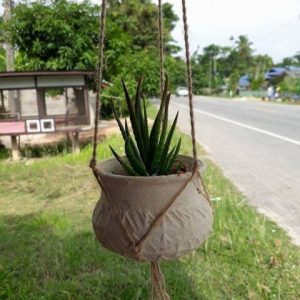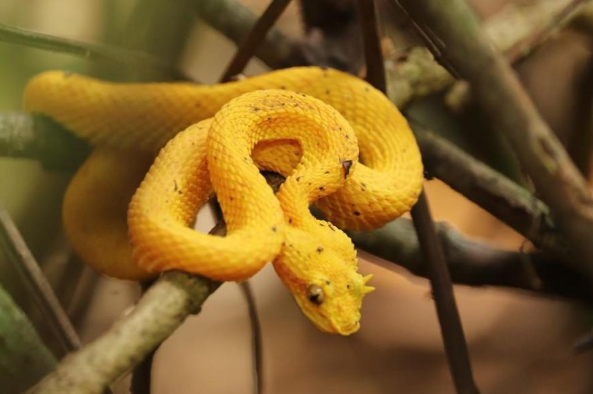
Ready to learn all about Costa Rican animals?
I’ve always been fascinated by animals, and by how they can be so different from one country to another. In this guide, we’ll focus on the many animals Costa Rica has on the land, in the sky, and underwater.
I’ve split the guide into 4 categories:
- Native animals from Costa Rica
- Endangered animals of Costa Rica
- What is Costa Rica national animal?
- How many animals native to Costa Rica?
Let’s dive in right away with our first category!
Native Animals from Costa Rica
Costa Rica is an American country located in the central part of the continent, next to the Panama Canal. It is renowned to be the land of the free, with a very efficient and stable democracy, a free press, and a highly educated workforce, though it used to be a Spanish colony. It is bordered by Panama and Nicaragua, and its biggest and capital city is San José, which counts more than 342,000 inhabitants (but more than 2,158,000 if you include the metropolitan area!).
An interesting part of the country that I wanted to tackle is its wildlife. In light of that, I have listed the best of it, and I hope you will love learning what animals live in Costa Rica.
Here’s the Costa Rica animals list.
1. Scarlet macaw
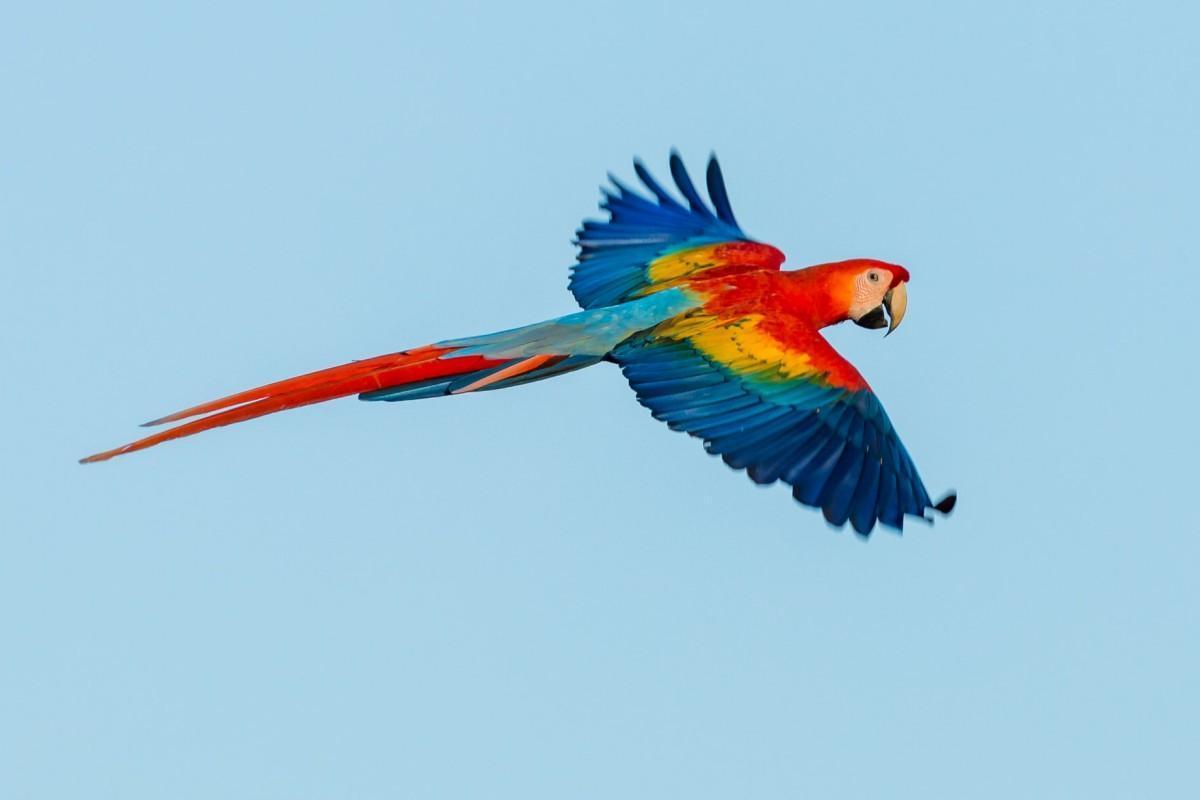
- Name: Scarlet macaw
- Scientific name: Ara macao
- Conservation status:
The scarlet macaw is one of the most notorious species of parrot. It is large, yellow, blue, and mostly red, and is native to Costa Rica, as well as other Central and South American countries such as Mexico, Colombia, Brazil, Bolivia, and Venezuela.
Due to habitat destruction and illegal parrot trade, this macaw has locally disappeared in some areas. Because of its bright and spectacular plumage, it is one of the most widely appreciated birds in aviculture alongside its relative, the blue-and-yellow macaw.
2. Mantled howler
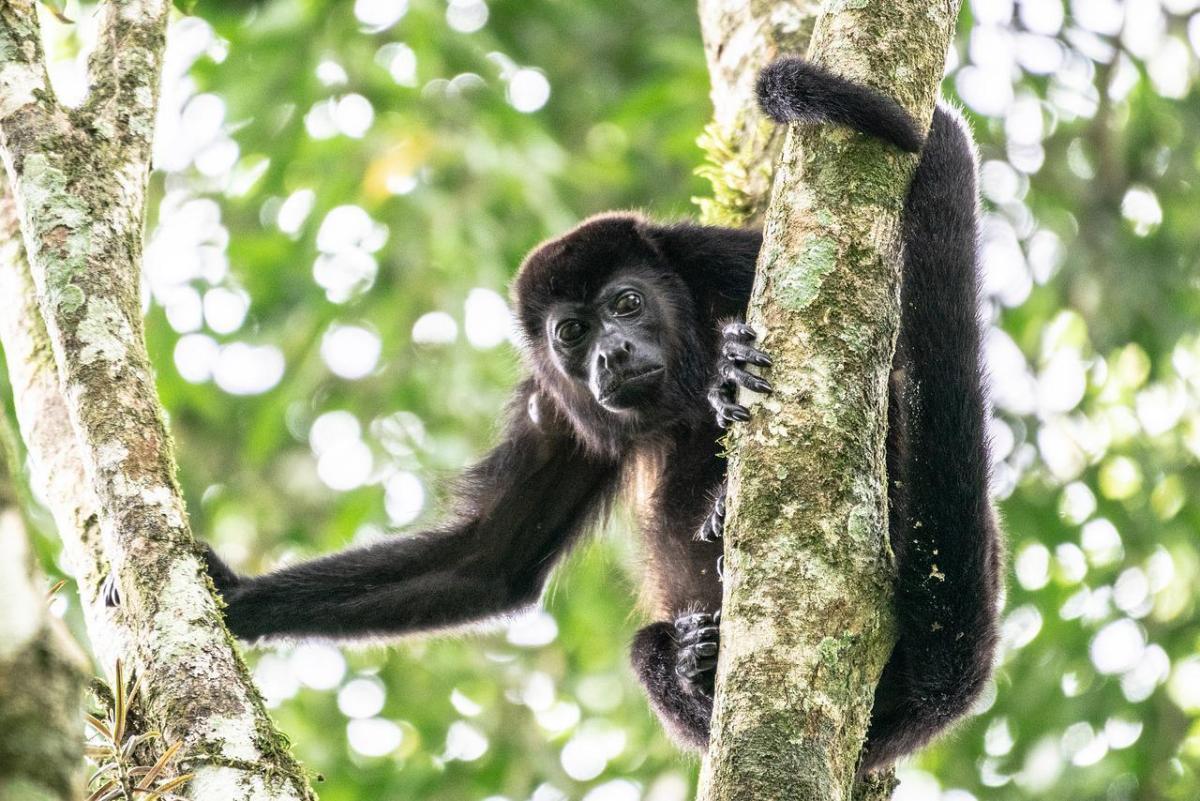
- Name: Mantled howler
- Scientific name: Alouatta palliata
- Conservation status:
The mantled howler is a species of howler monkey, which are New World monkeys. It is native to Central and South America, and can easily be seen and heard in the wild in Central America.
As its name suggests, it literally howls. Males, often in groups, do not hesitate to produce loud calls, usually at dawn, at dusk, or in response to potential danger. Funnily enough, these howls are used to locate other monkeys without having to move: quite lazy, right?
3. Jaguar

- Name: Jaguar
- Scientific name: Panthera onca
- Conservation status:
Ah, the jaguar. Probably the symbol of Central and South America as a whole. This large cat species is the only panther native to the Americas and is the third largest one in the world.
Though it is a very scary animal, it is very elusive and quite hard to spot. Despite this, it is still severely threatened by poaching, killings in human conflicts, and habitat loss. Because of this and the fact that the jaguar is an important part of local mythology and folklore, several protection plans were launched.
4. Resplendent quetzal
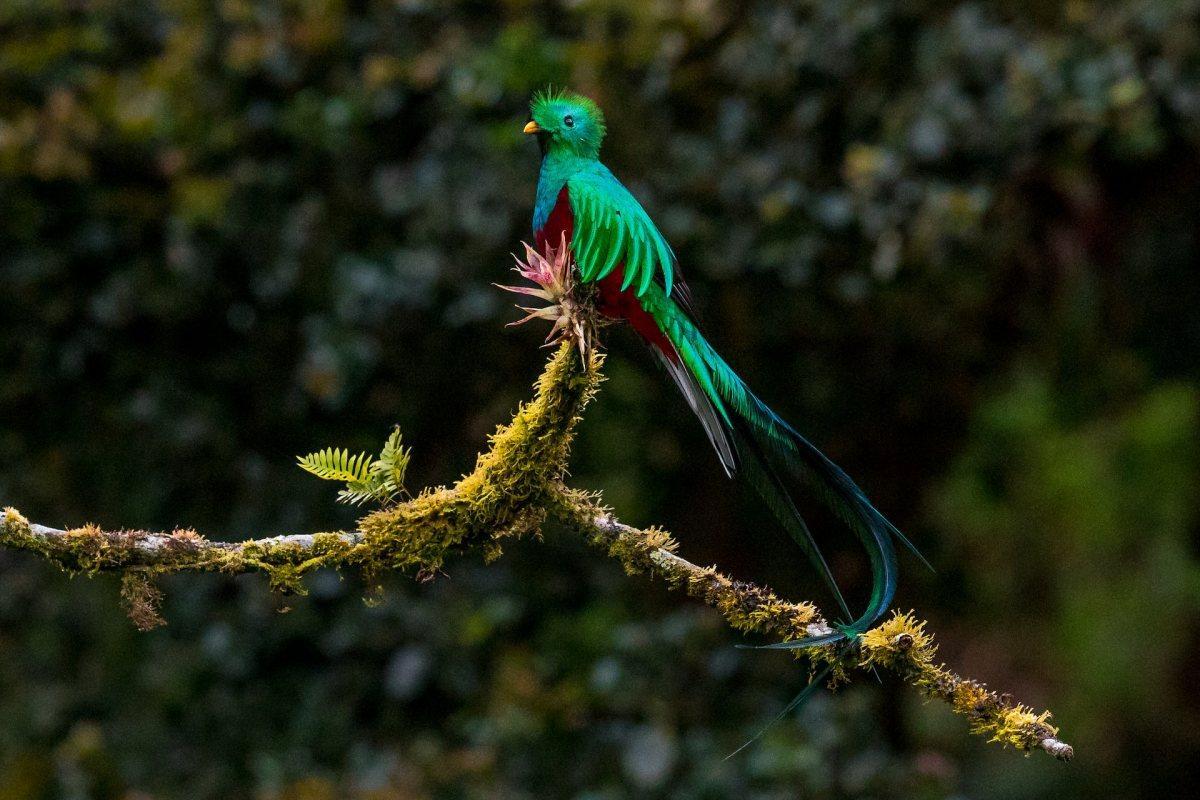
- Name: Resplendent quetzal
- Scientific name: Pharomachrus mocinno
- Conservation status:
The resplendent quetzal is one of the most stunning birds you will see in Costa Rica. It has long black and gray tail feathers, and lives in the canopy of cloud forests.
This small but very bright bird usually feeds on fruit, but also on insects such as ants, larvae, and wasps, as well as lizards and frogs. It plays an important role in seed dispersal, especially for wild avocados.
5. Margay
- Name: Margay
- Scientific name: Leopardus wiedii
- Conservation status:
The very bright coloring of the resplendent quetzal may work against it… especially when it comes to the margay. It is a small species of wild cat native to Central and South America that majorly feeds on small mammals (like monkeys), birds, tree frogs, and lizards.
It is closely related to the ocelot, a larger version of itself, and is a nocturnal and solitary cat. Its population is steadily declining because of deforestation though.
6. Ocelot
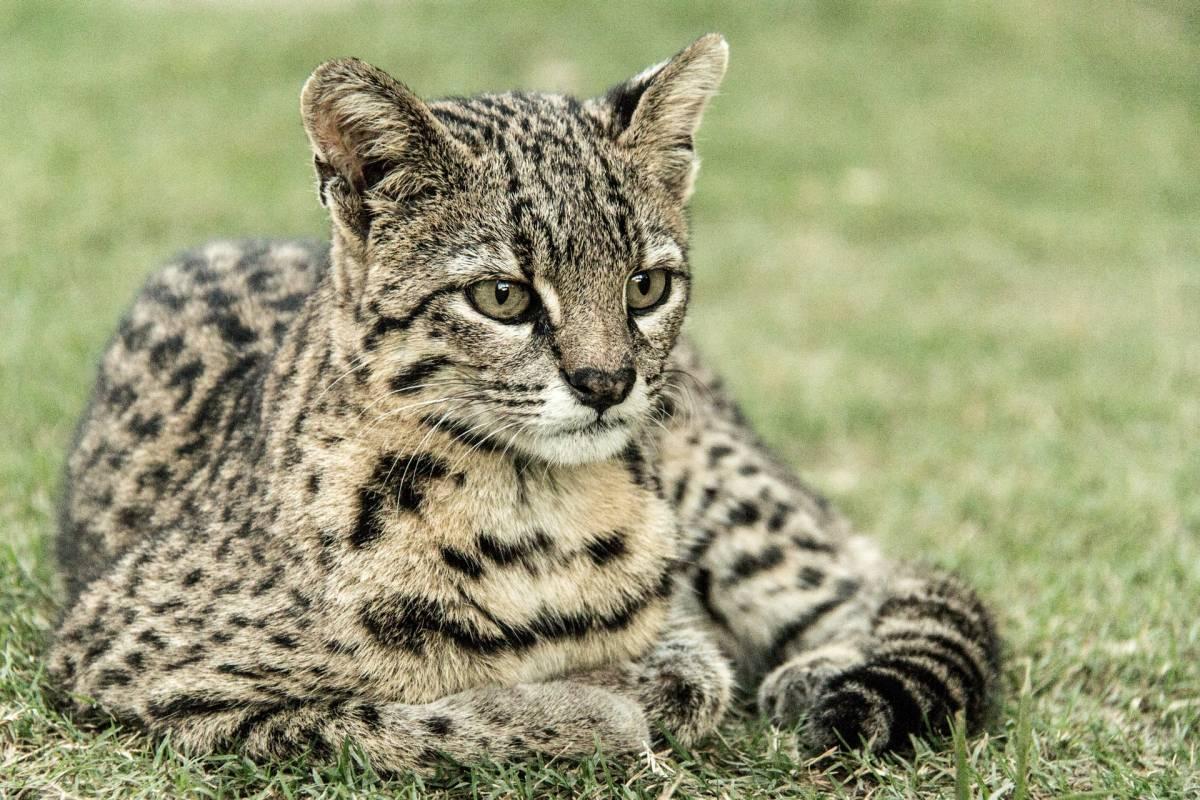
- Name: Ocelot
- Scientific name: Leopardus pardalis
- Conservation status:
Related to the margay, the ocelot is much larger. It is a medium-sized species of wild cat native to the United States, Mexico, and Central and South America, as well as some Caribbean islands. Usually, it inhabits areas with dense vegetation and water and prey availability.
The ocelot is a nocturnal predator that feeds on armadillos, lagomorphs, and opossums. It is a very territorial animal and a skilled climber, swimmer, and leaper.
7. Eyelash viper
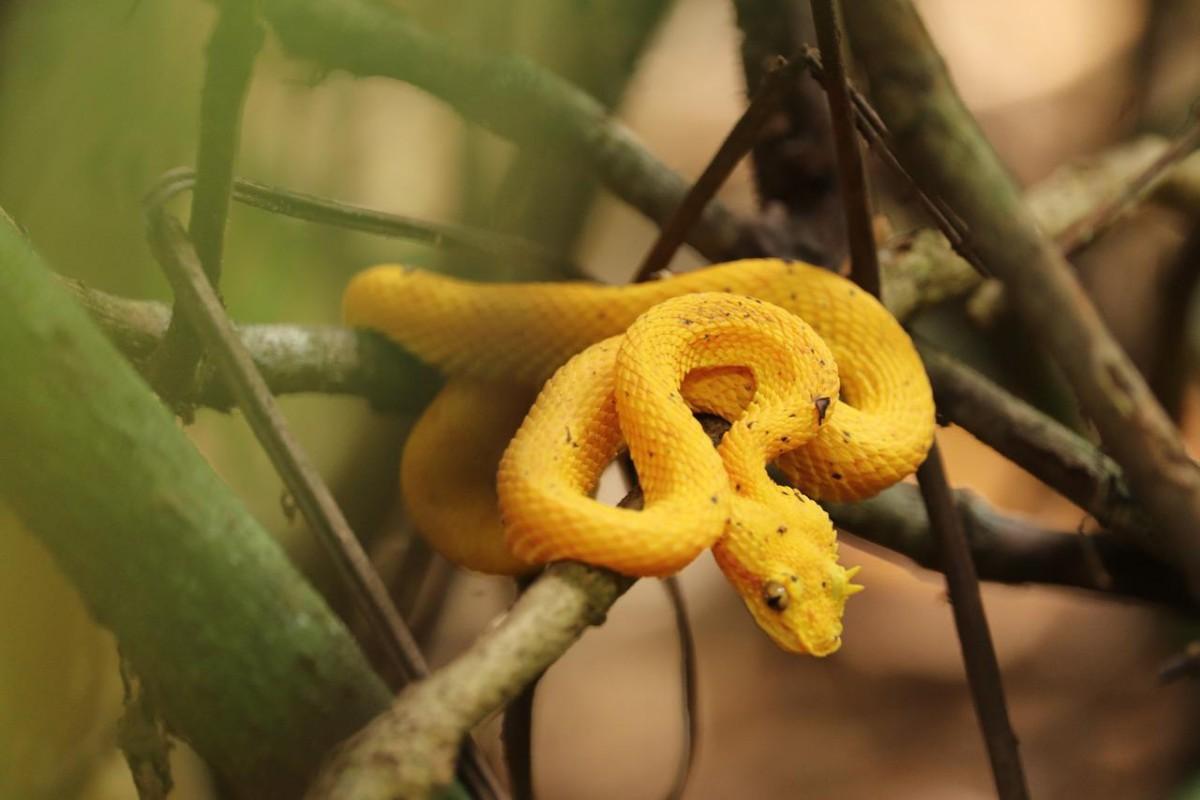
- Name: Eyelash viper
- Scientific name: Bothriechis schlegelii
- Conservation status:
The eyelash viper, also known as Schlegel’s viper, the horned palm viper, or the eyelash mountain viper, is one of the most common reptiles that can be found in Costa Rica. It is one of 20 venomous snakes in the country and is bright yellow.
Its name comes from the little scales above its eyes that look like eyelashes. This viper can be seen in zoos all around the world and is sometimes even kept as a pet, despite its dangerous venom.
8. Spectacled caiman
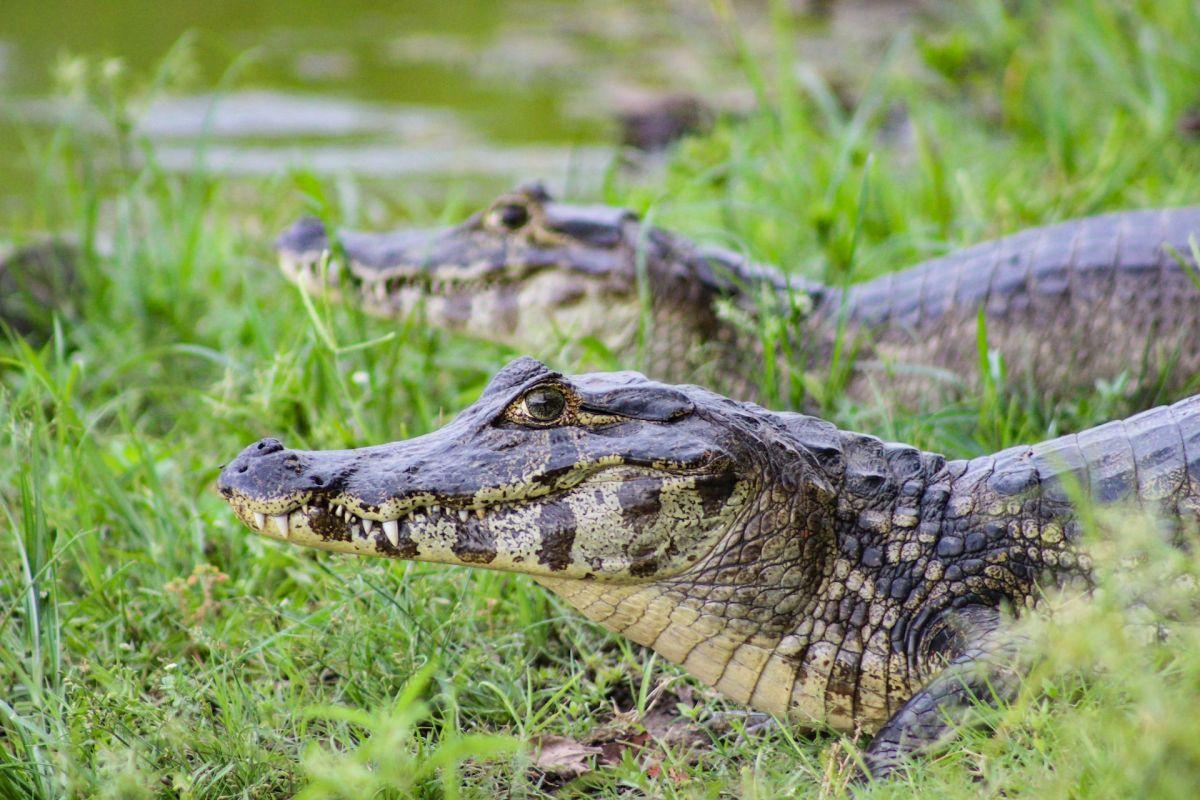
- Name: Spectacled caiman
- Scientific name: Caiman crocodilus
- Conservation status:
The spectacled caiman, also known as the speckled caiman, the common caiman, or the white caiman, is a species of crocodilian native to Latin America, though it has also been introduced to the United States, Puerto Rico, and Cuba.
Compared to other crocodilians, this caiman is quite small. In typical crocodile behavior, it mostly stays still, resting on shores. However, it can move very rapidly when threatened, and males become aggressive and territorial during the rainy season.
9. Common vampire bat
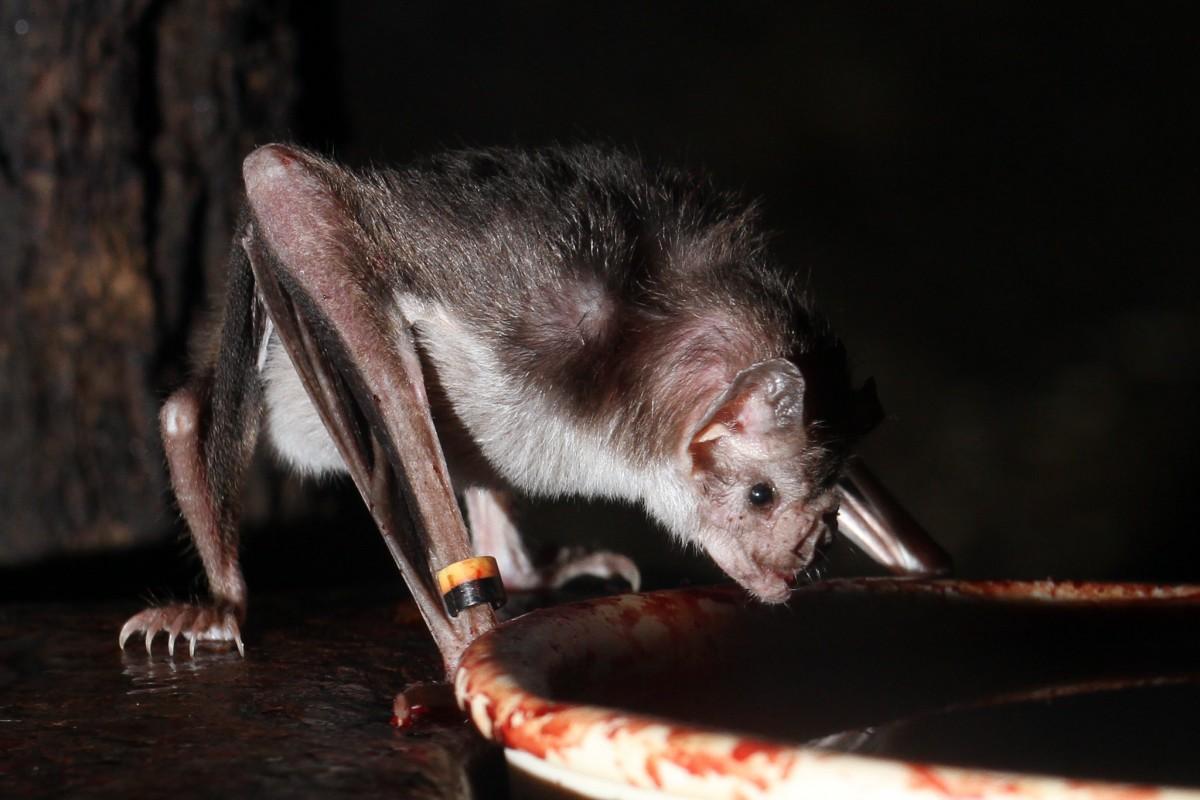
Mark Dumont / CC BY-NC
- Name: Common vampire bat
- Scientific name: Desmodus rotundus
- Conservation status:
The common vampire bat is a small species of bat native to Latin America. There are two other vampire bats on the planet: the hairy-legged vampire bat and the white-winged vampire bat.
This bat preys on sleeping prey, at night, and cuts open the skin with its razor-sharp teeth, before lapping up the blood with its long tongue… just like vampires. Interestingly enough, it is a very cooperative species that will not hesitate to share food.
10. Baird’s tapir
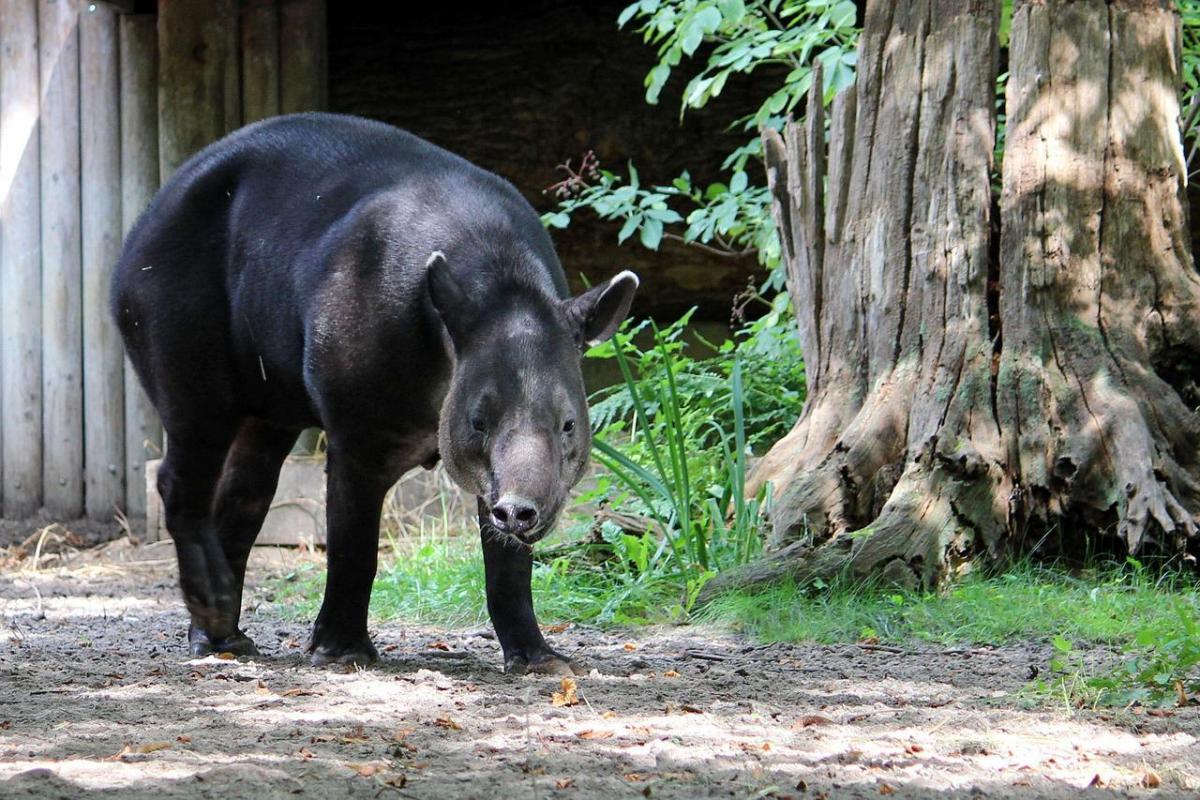
- Name: Baird’s tapir
- Scientific name: Tapirus bairdii
- Conservation status:
The Baird’s tapir, also known as the Central American tapir, is a species of tapir native to Central America as a whole, but also northwestern South America. It is the largest native land mammal in Central and South America.
Even though it can be active at all times, it is mainly a nocturnal animal. In order to feed, it forages for leaves and fruits. It likes to swim and wade, especially on hot days, and will therefore stay close to the water.
11. South American cougar
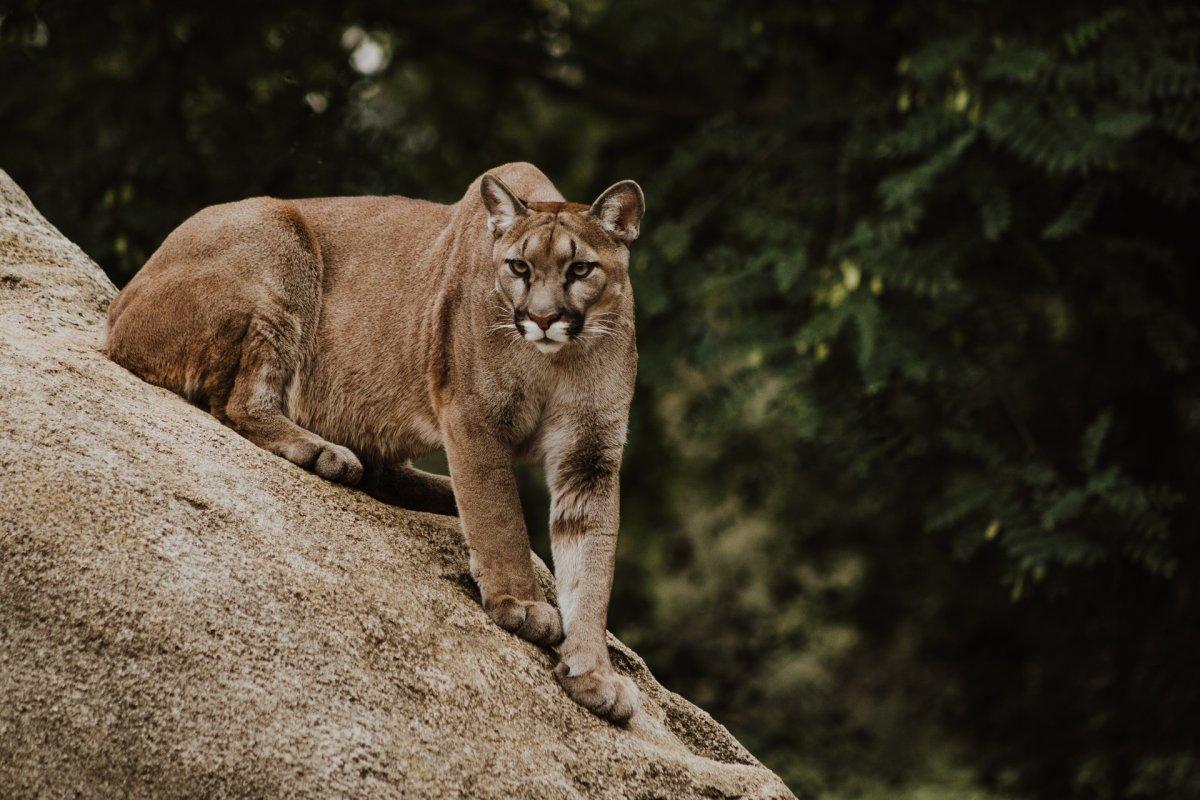
- Name: South American cougar
- Scientific name: Puma concolor concolor
- Conservation status:
The South American cougar is yet another species of scary, large wild cats in Costa Rica. The cougar is one of the most dreadful encounters a hiker can make in the middle of the North American mountains, but the South American jungle has its own subspecies.
This cougar feeds on birds, deers, sloths, frogs, rodents, and lizards, and can even prey on bear cubs! In other areas, it will also mostly feed on vicuñas, which are camelids related to the llama.
12. Clay-colored thrush
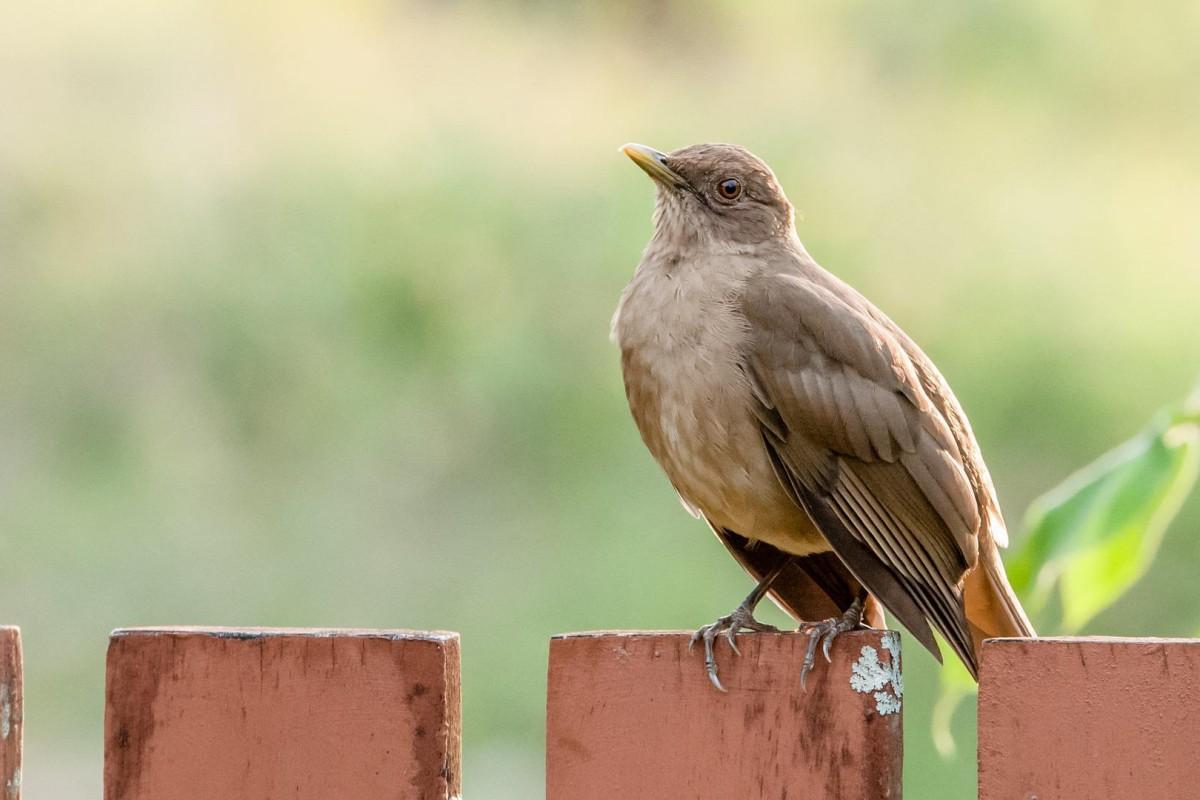
- Name: Clay-colored thrush
- Scientific name: Turdus grayi
- Conservation status:
The clay-colored thrush, also known as the clay-colored robin or the “yigüirro”, is the national bird of Costa Rica, though it can be found from southern Texas to northern Colombia. It can easily be seen in yards and gardens and is similar to other thrushes, like the Eurasian blackbird, the song thrush, and the American robin.
This thrush feeds on invertebrates and fruits. An interesting behavior of it is the fact that it follows army ants to feed on small prey disturbed by the ant columns!
13. Common opossum
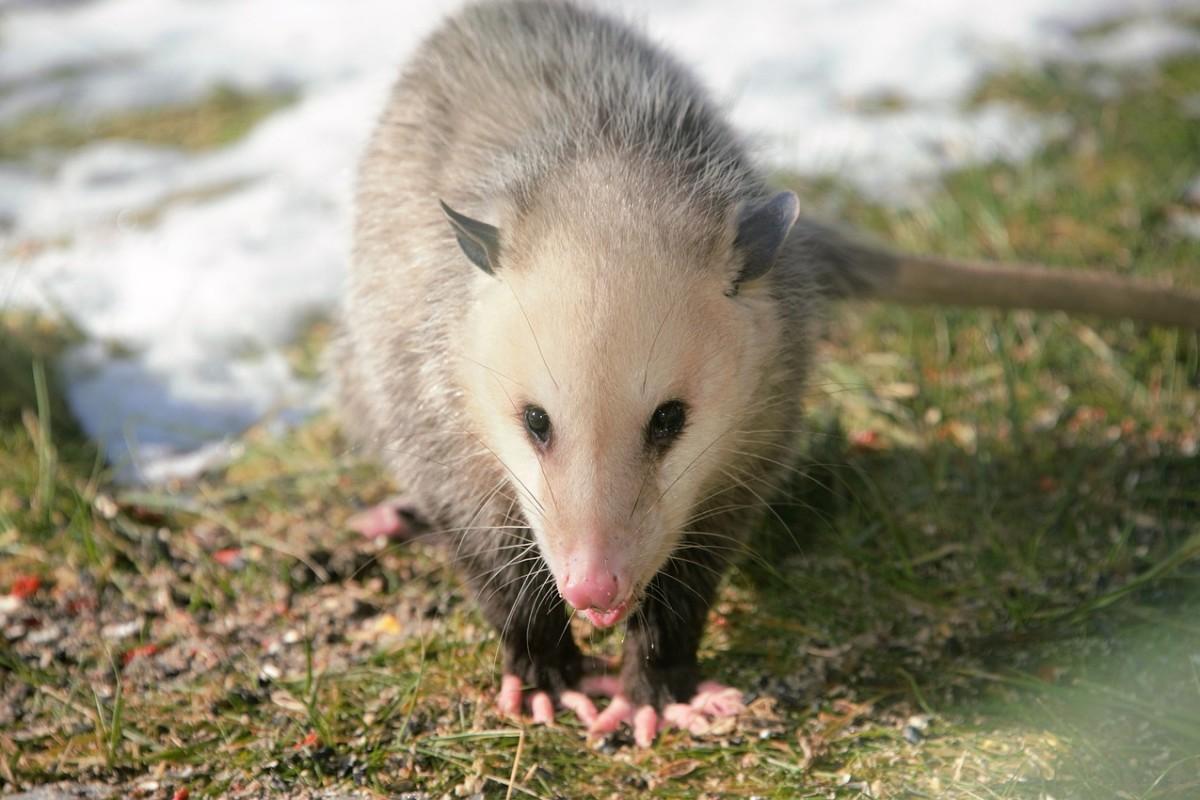
- Name: Common opossum
- Scientific name: Didelphis marsupialis
- Conservation status:
The common opossum, also known as the black-eared opossum, the gambá, the possum, or the southern opossum, is a species of marsupial native to Central and South America, from Mexico to Bolivia. While it usually lives in the woods, it can be seen more and more often in the middle of fields and cities.
This animal lives at up to 2,200 m / 7,217 ft, and creates its nest in a hollow tree.
14. West Indian manatee
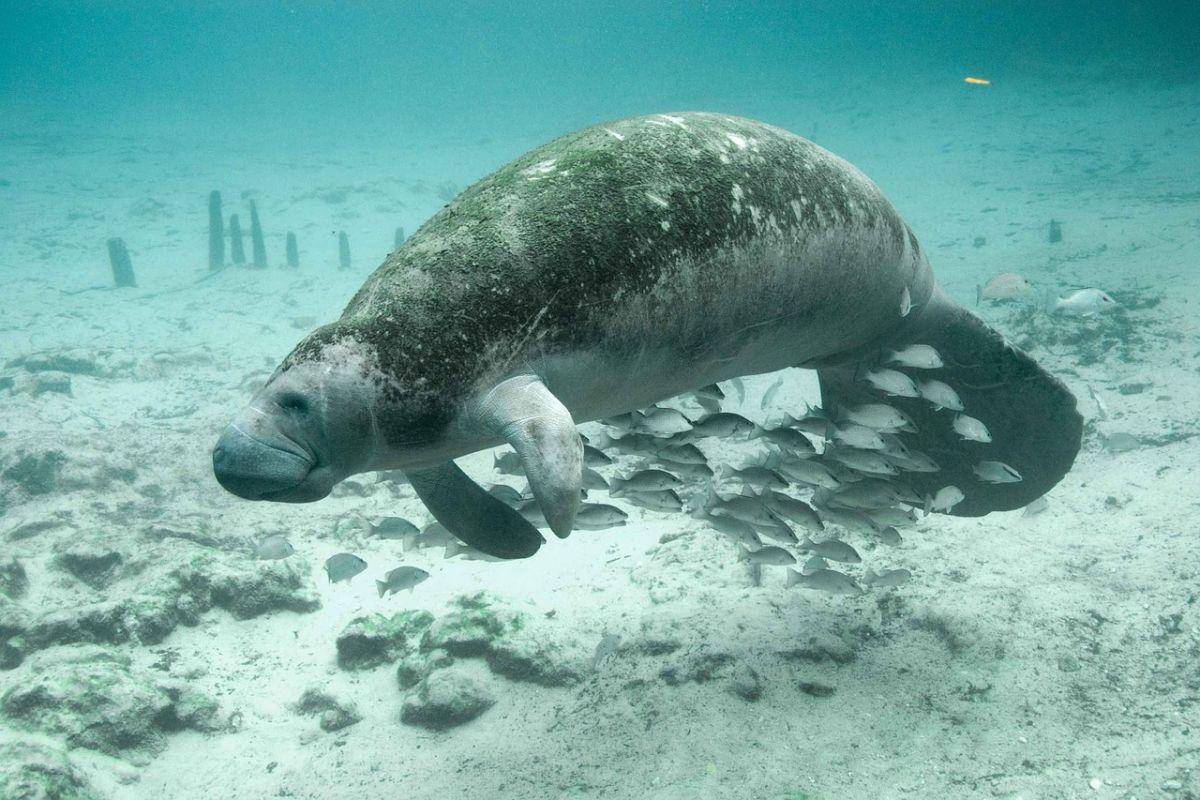
- Name: West Indian manatee
- Scientific name: Trichechus manatus
- Conservation status:
Manatees are very intriguing creatures. The West Indian manatee, also known as the North American manatee, the Florida manatee, or the Caribbean manatee, is a species of aquatic mammal native to the eastern coasts of Central and South America, around the equator, but as far up as the eastern United States.
This manatee lives in shallow coastal areas such as estuaries and rivers, and it can only live in warm waters.
15. Hoffmann’s two-toed sloth
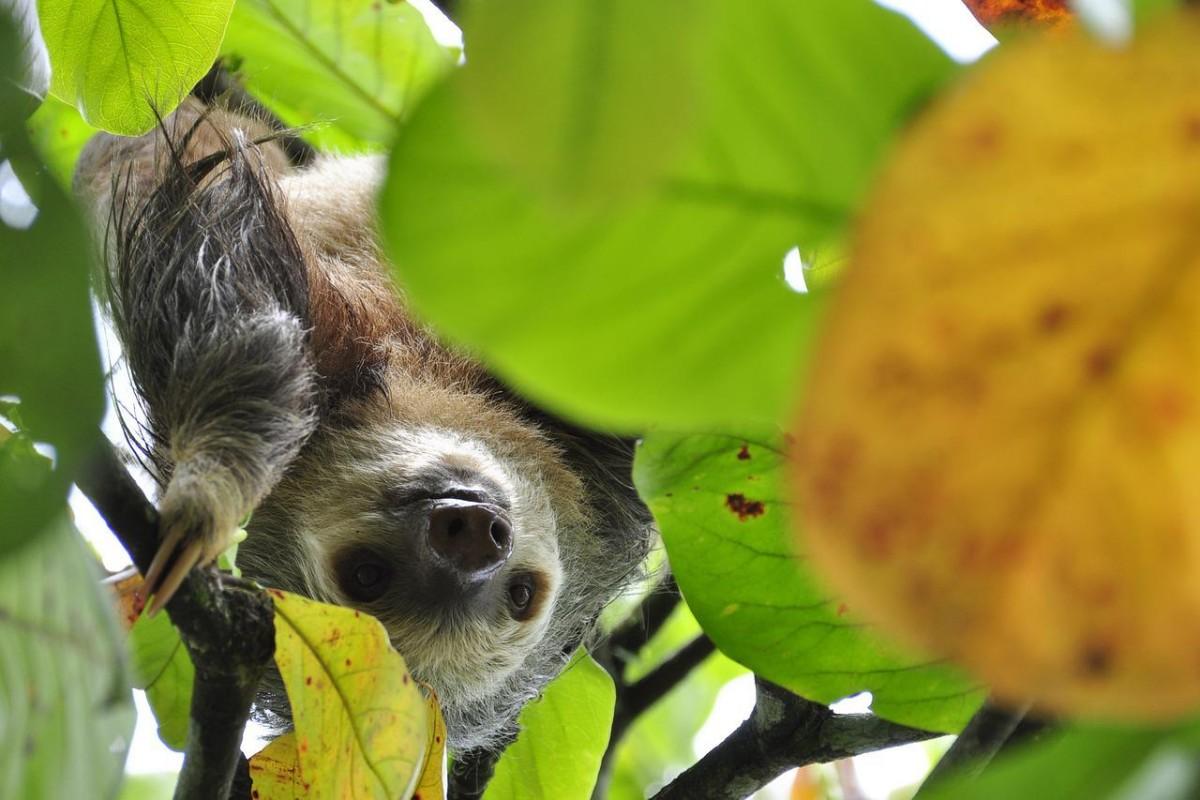
- Name: Hoffmann’s two-toed sloth
- Scientific name: Choloepus hoffmanni
- Conservation status:
Not only manatees but also sloths, are some of the most unique creatures you will see in Costa Rica. In fact, sloths are considered the national animals of Costa Rica, and they are iconic animals of Central America.
Hoffmann’s two-toed sloth, also known as the northern two-toed sloth, is a species of sloth native to Central and South America. It is an arboreal, nocturnal and solitary animal that was named after the German naturalist Karl Hoffmann.
16. Pantropical spotted dolphin
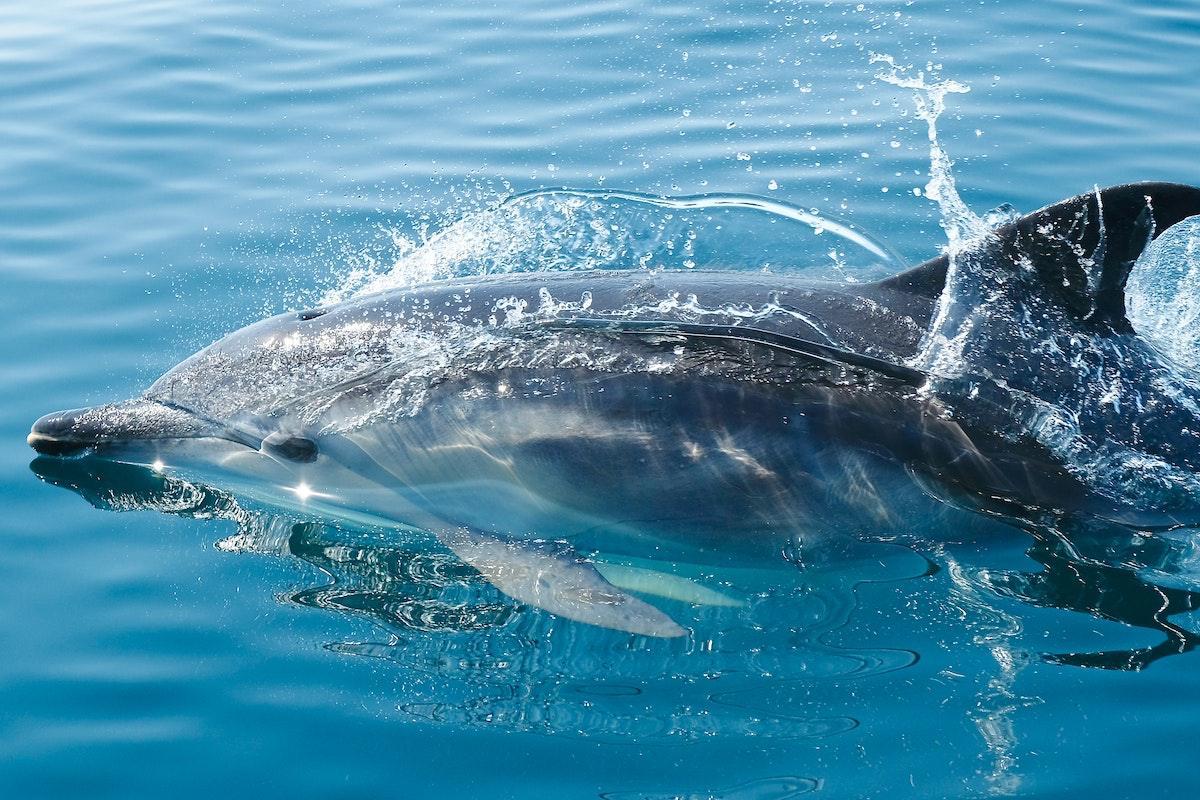
- Name: Pantropical spotted dolphin
- Scientific name: Stenella attenuata
- Conservation status:
The pantropical spotted dolphin is a species of dolphin that can be found in all the world’s tropical and temperate oceans. Even though it was starting to be threatened in the past because of the killings of millions of individuals in tuna fishing accidents, it has slowly become one of the most abundant dolphin species in the world after the 1980s, when “dolphin-friendly” tuna capture methods were adopted.
17. Coyote
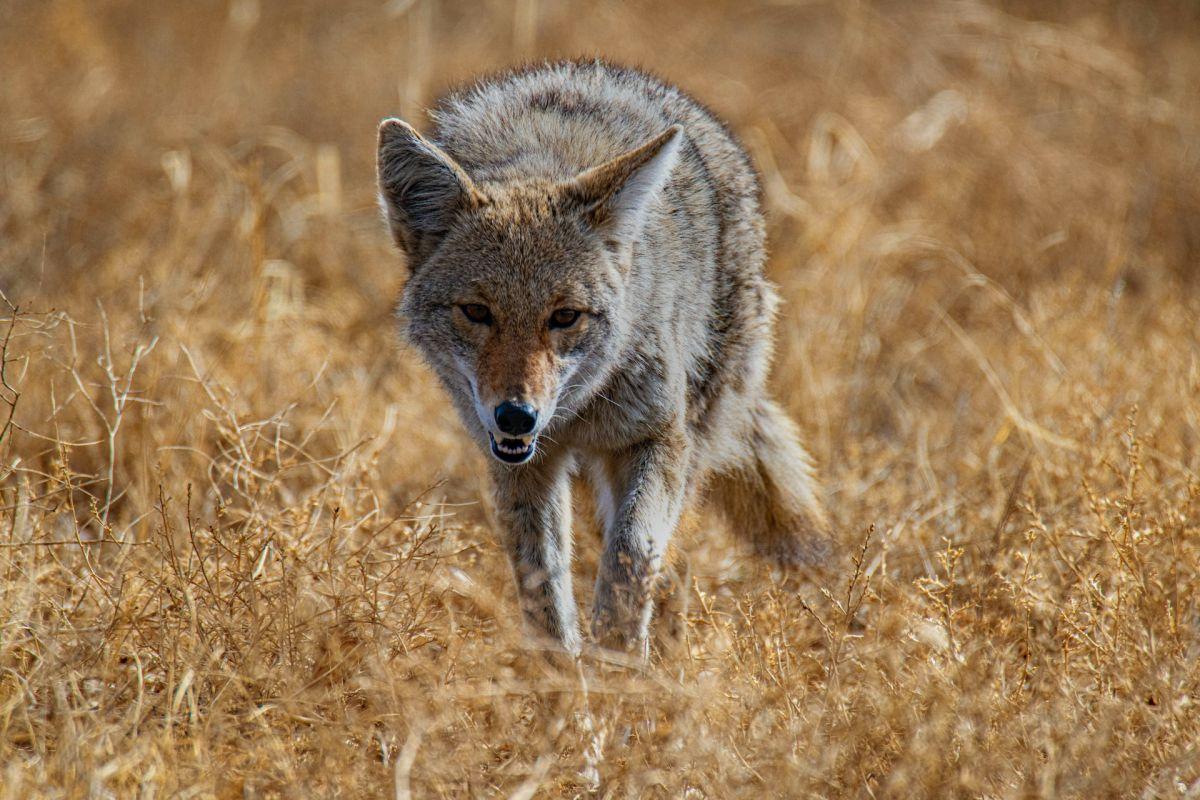
- Name: Coyote
- Scientific name: Canis latrans
- Conservation status:
The coyote is one of the most famous species of canine native to North and Central America. Its close relative, the wolf, is bigger, and it is a widely distributed and fairly common species throughout all of North America.
What makes the coyote successful as a species is its versatility: it can adapt to almost any environment and prey availability, and can even live in urban areas. Most of the time, it feeds on deers, rabbits, birds, hares, lizards, fish, and reptiles.
18. Bush dog
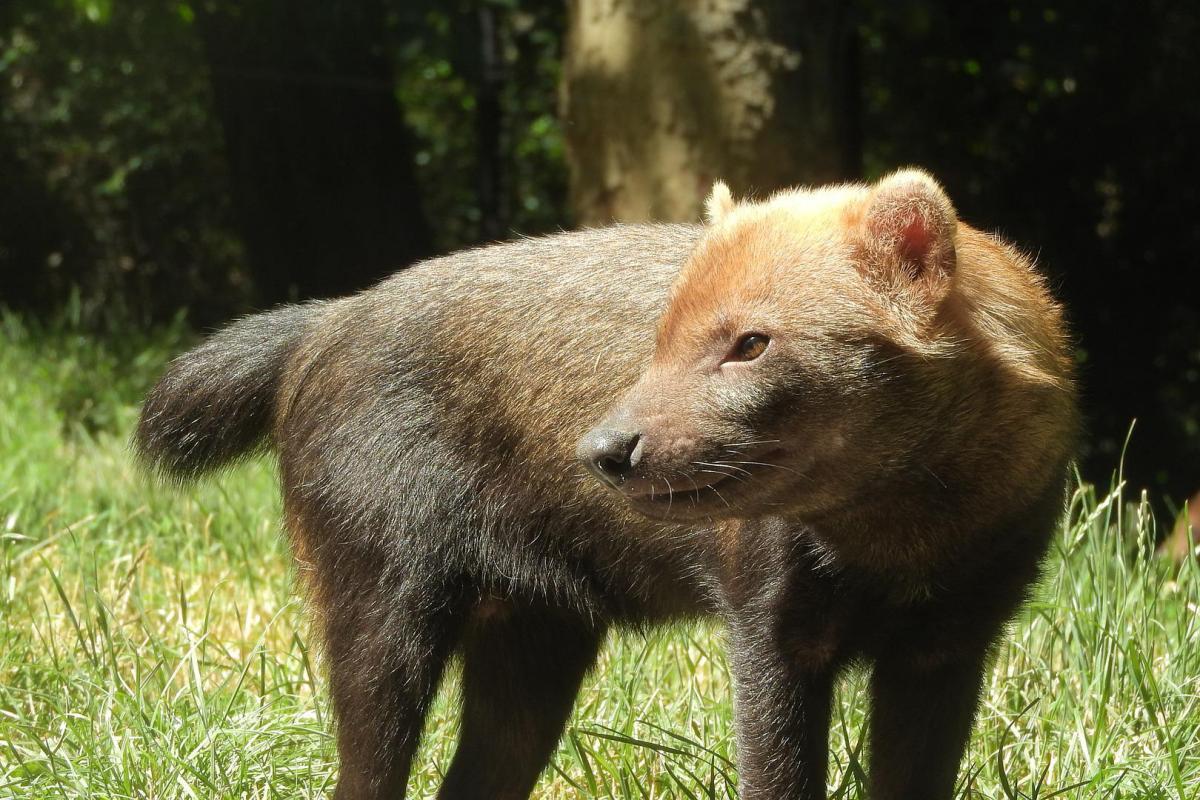
- Name: Bush dog
- Scientific name: Speothos venaticus
- Conservation status:
The bush dog, also known as “zorro vinagre”, “cachorro-vinagre” or “perro de monte” in Brazil, is a species of canine native to Central and South America. Even though it has a large range, it is quite rare outside of Guatemala, Peru, and Guyana, and was even thought to be extinct at some point.
This canine is a carnivore and is active during the day: its prey are agoutis, capybaras, and pacas, which are all large rodents.
19. American crocodile
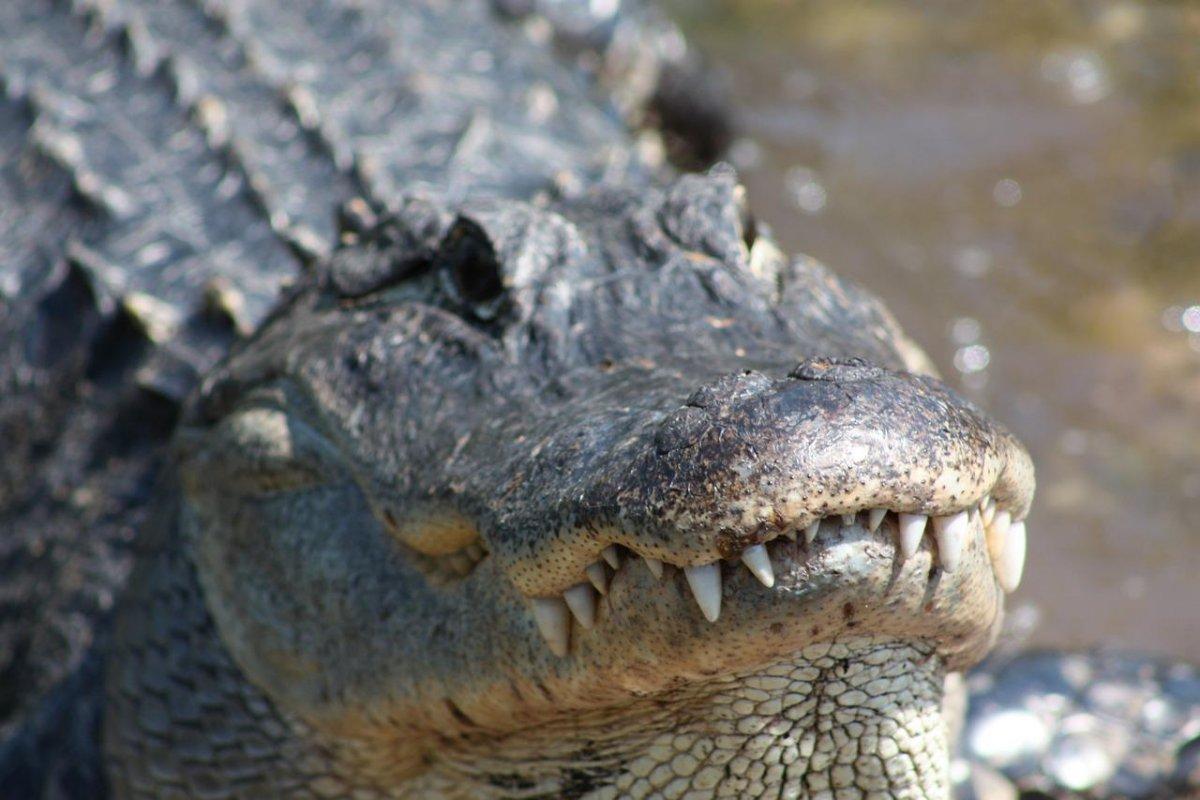
- Name: American crocodile
- Scientific name: Crocodylus acutus
- Conservation status:
The American crocodile is a species of crocodilian native to the Neotropics. It is the most widespread species of crocodiles in the Americas, as it can be seen from Florida to Peru and Venezuela. This crocodile largely lives in coastal areas, though it can also be found in river systems.
Even though it is not aggressive, it can be very dangerous to humans. However, it is threatened by poaching, pollution, commercial farming, and habitat loss.
20. White-nosed coati
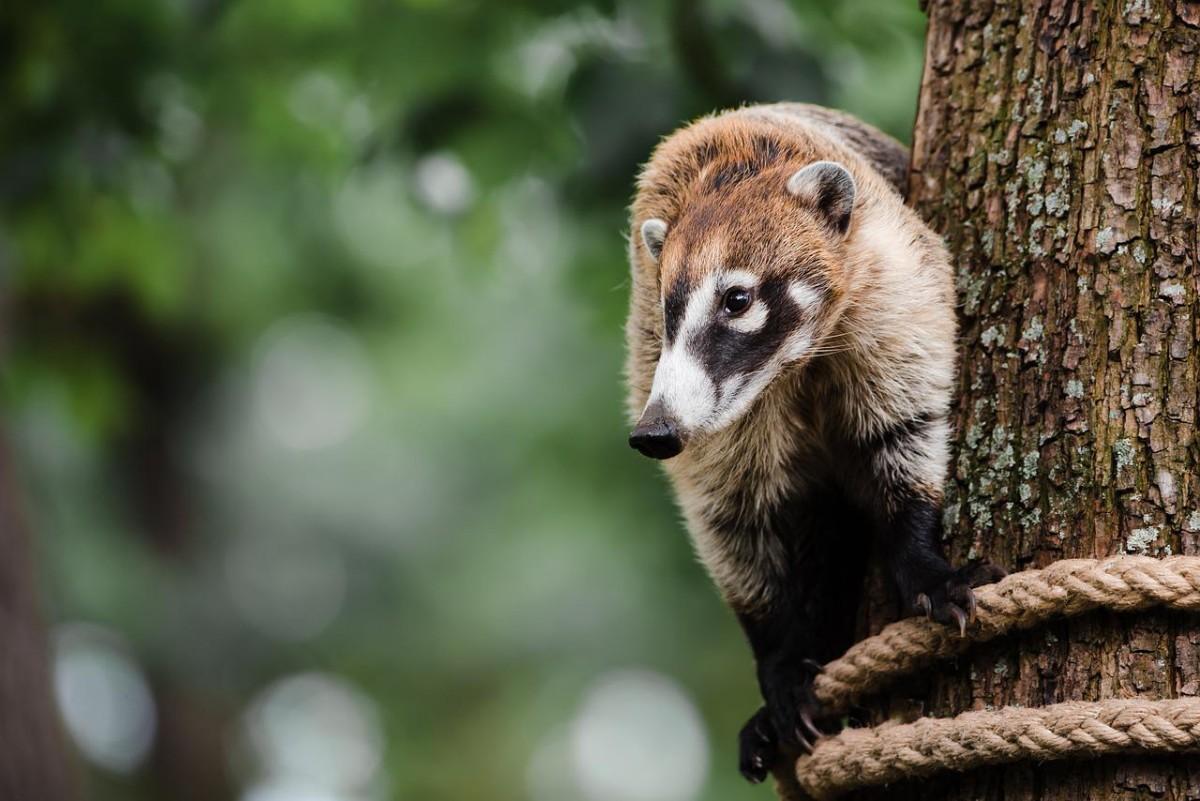
- Name: White-nosed coati
- Scientific name: Nasua narica
- Conservation status:
The white-nosed coati, also known as the coatimundi, the “antoon” or the “pizote”, is a species of coati native to the Americas, from southeastern Arizona to northwestern Colombia. It lives in wooded areas in tropical and subtropical forests, at up to 3,000 m / 9,800 ft.
Importantly, this coati is a pollinator of the balsa tree, as it inserts its nose into the flowers of the tree and ingests nectar without damaging the flower at all!
21. Caribbean monk seal
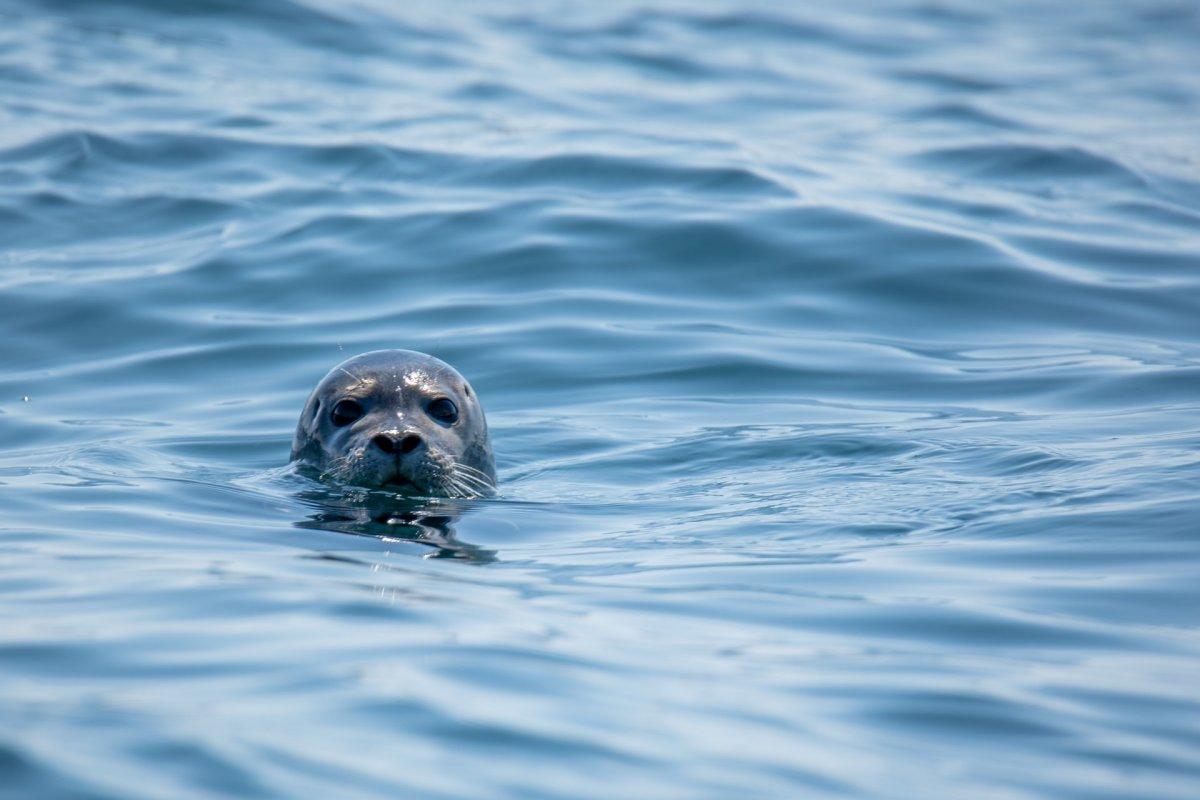
- Name: Caribbean monk seal
- Scientific name: Neomonachus tropicalis
- Conservation status:
The Caribbean monk seal, also known as the sea wolf or the West Indian seal, was a species of seal native to the Caribbean Sea. It is now considered extinct due to overhunting, overfishing of its food resources, and shark and human attacks.
The last time a Caribbean monk seal was seen was in 1952, between Jamaica and Nicaragua. After a thorough 5-year long search, the species was declared extinct in 2008.
22. Neotropical otter
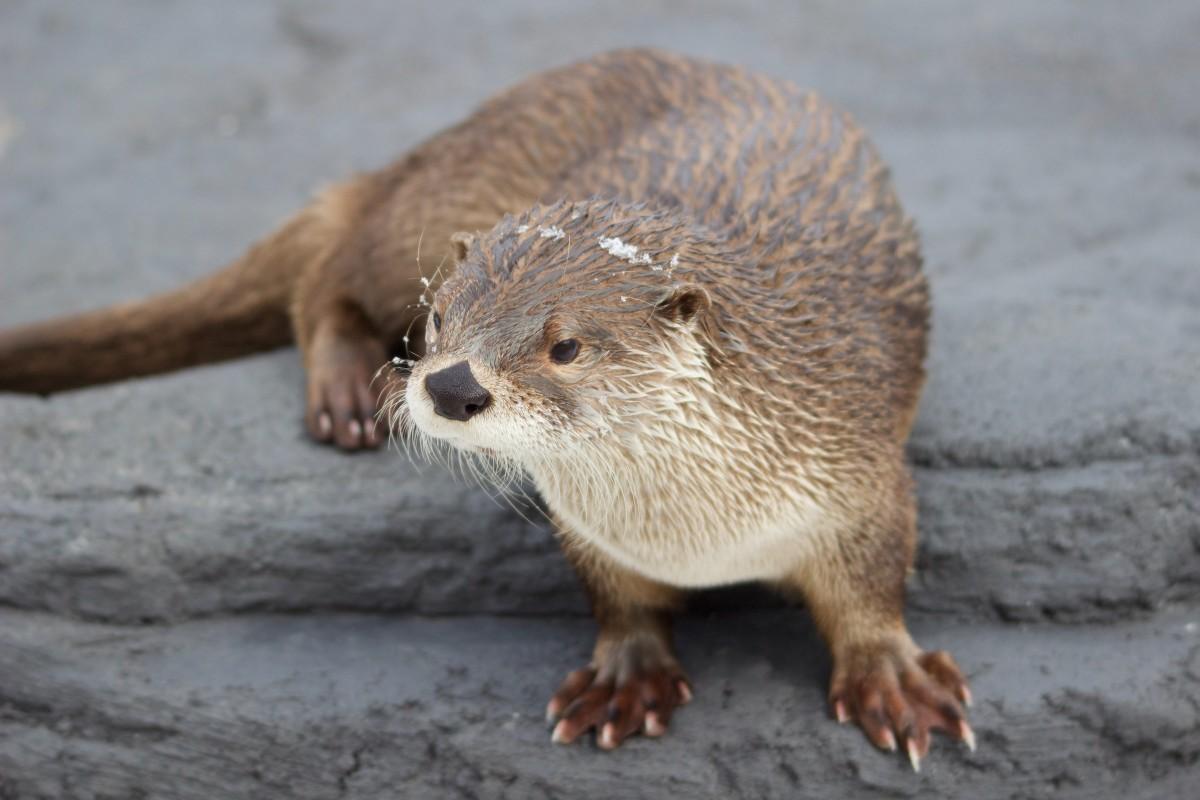
- Name: Neotropical otter
- Scientific name: Lontra longicaudis
- Conservation status:
The neotropical otter is a species of otter native to Central and South America, as well as the island of Trinidad in the Caribbean Sea. It inhabits riverine habitats like forests and savannas and prefers to live in clear fast-flowing streams and rivers.
This otter is a solitary animal that feeds on crustaceans and fish. Occasionally, it will also eat small mammals and mollusks and can attack fishnets.
23. Kinkajou
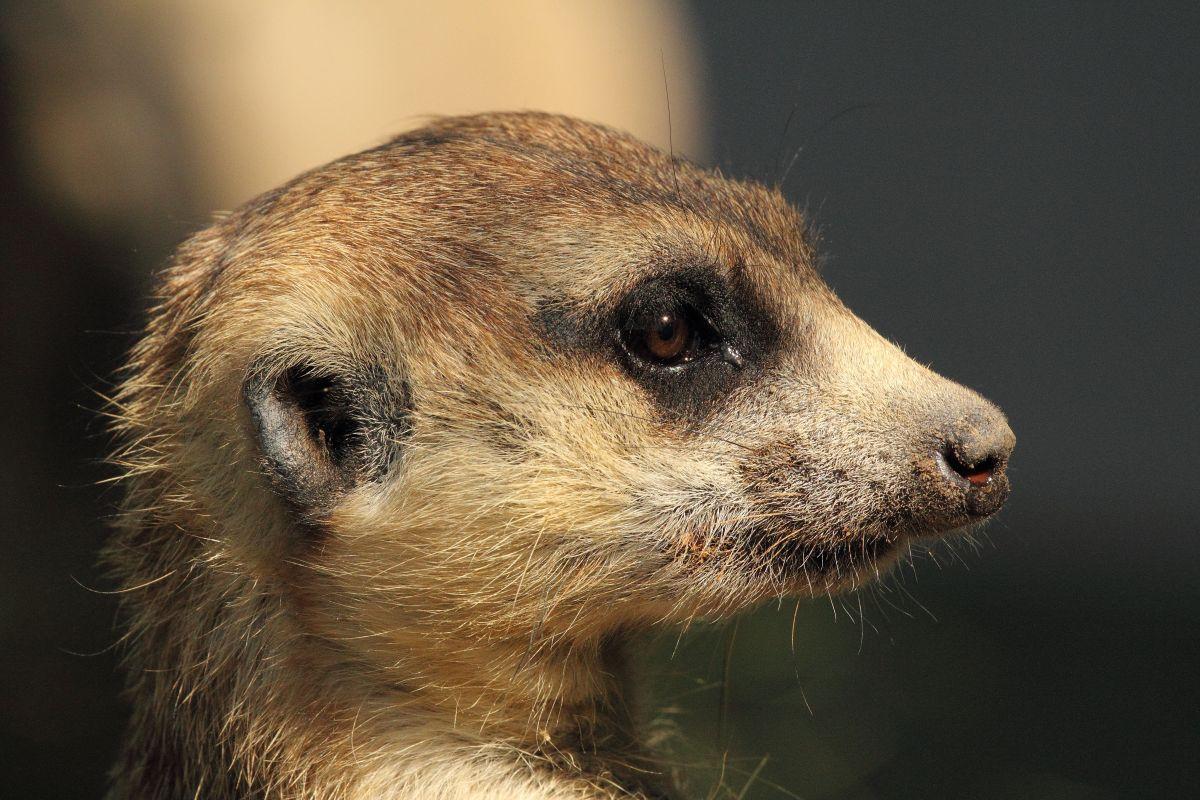
- Name: Kinkajou
- Scientific name: Potos flavus
- Conservation status:
The kinkajou is a species of mammal native to the tropical rainforest of Central and South America. It is related to raccoons and coatis and mostly feeds on fruit.
Its name derives from the French “quincajou”, a local name for the wolverine. In English, it is also called the honey bear, the night ape, and the nightwalker. Most of the time, the kinkajou is hanging on a tree.
24. White-lipped peccary
- Name: White-lipped peccary
- Scientific name: Tayassu pecari
- Conservation status:
The white-lipped peccary is a species of peccary native to Central and South America. The majority of its range is in rainforests, but it can also easily adapt to other environments such as mangroves, dry forests, and grasslands.
This animal is active by day and is mostly active in the mornings and afternoons. Most of the time, it is either traveling or feeding, and it is threatened by deforestation and hunting.
25. Zebra longwing
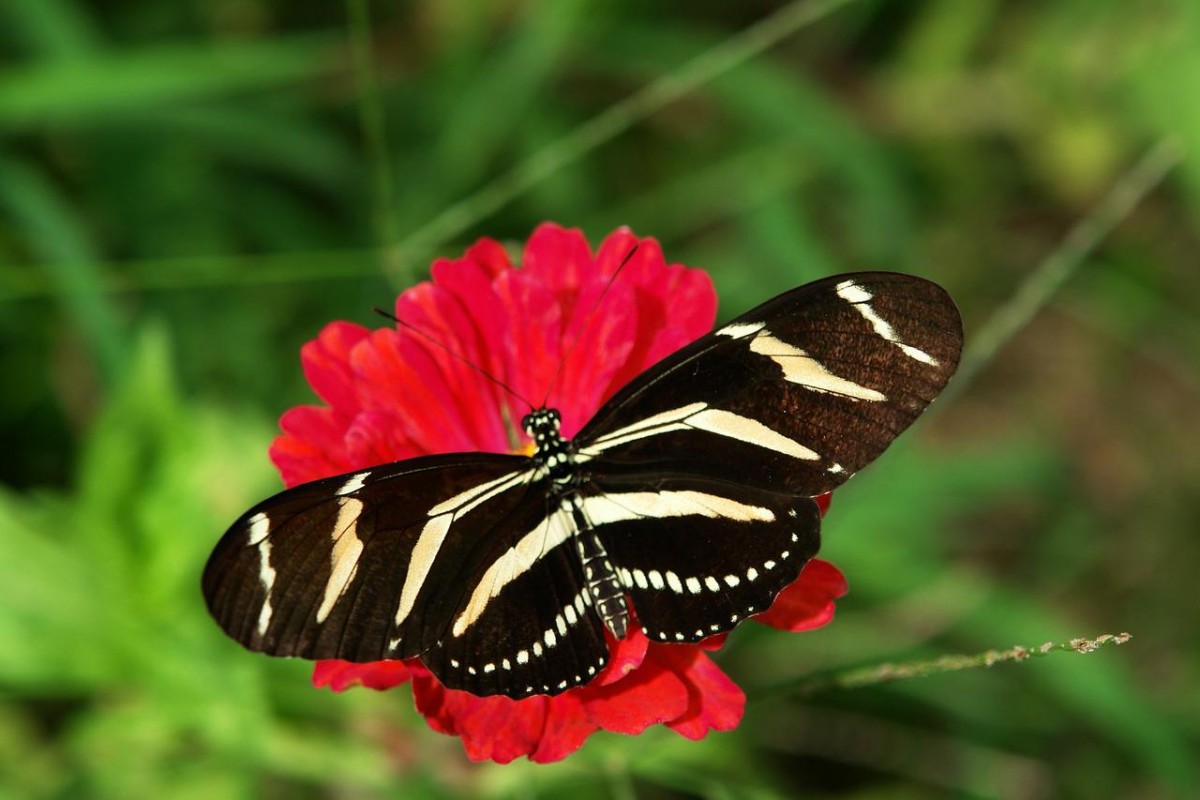
- Name: Zebra longwing
- Scientific name: Heliconius charithonia
- Conservation status:
On top of all the large and famous animals, Costa Rica is home to tons of insects, reptiles… and butterflies. The zebra longwing is one of them, and it is truly beautiful. It has a striped black and white wing pattern, which is made to warn off predators.
Adult individuals usually stay together, in a group of up to 60, for safety from predators. Their bodies are even toxic, but this does not save the species: in several areas, it has been decimated because of pesticides, and though it is considered of least concern, this still needs to be properly assessed.
26. Jaguarundi
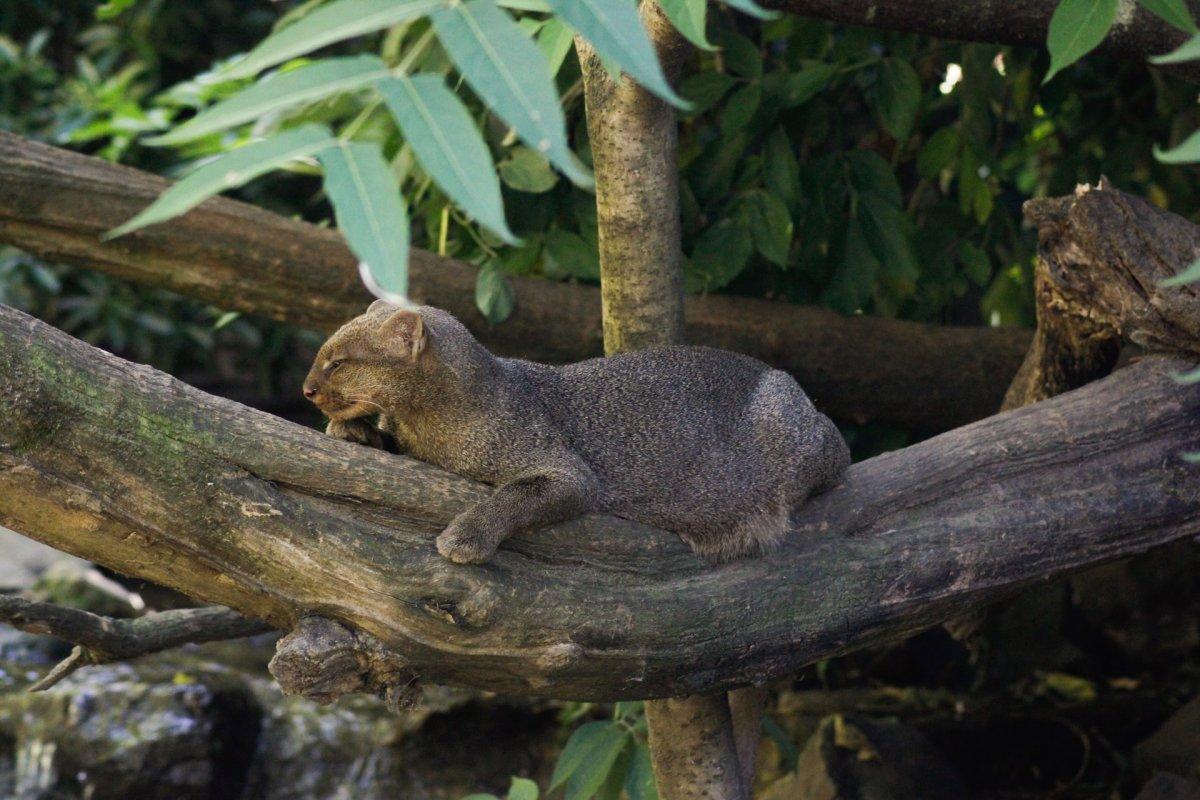
- Name: Jaguarundi
- Scientific name: Herpailurus yagouaroundi
- Conservation status:
The jaguarundi is a species of wild cat native to the Americas. It can be found in the central and southern parts of the continent, from northern Mexico to central Argentina. It is medium-sized and has a slender build with an elongated body and short legs.
This wild cat is very alert and secretive and lives a solitary life. Unlike other animals like the jaguar, it is active during the day.
27. Golden toad
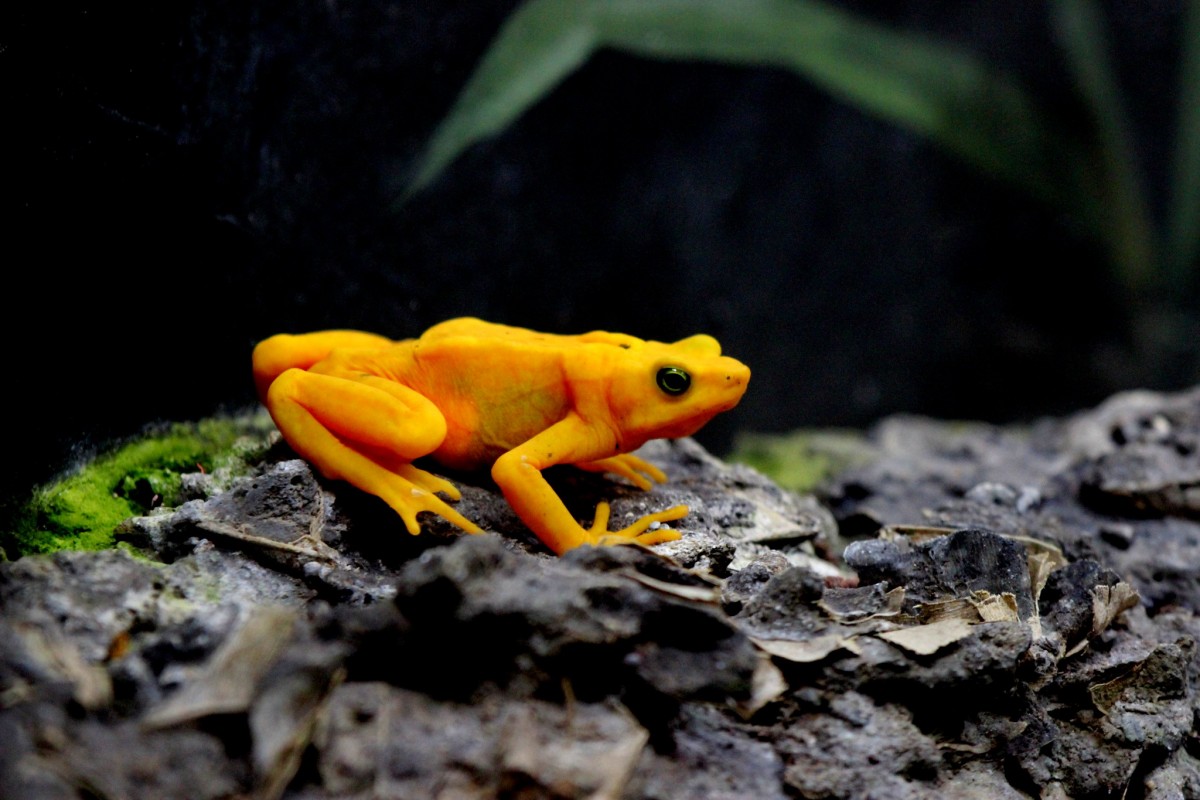
cuatrok77 / CC BY-SA
- Name: Golden toad
- Scientific name: Incilius periglenes
- Conservation status:
The golden toad is an extinct species of toad native to a very small area (4 square kilometers / 1.5 sq mi) of Costa Rica. It was also known as the orange toad, the Monte Verde toad (the region where it used to live), or the Alajuela toad.
It is one of the most important symbols of the global amphibian decline crisis: it was first seen in 1966, and last… in 1989.
28. Brown basilisk
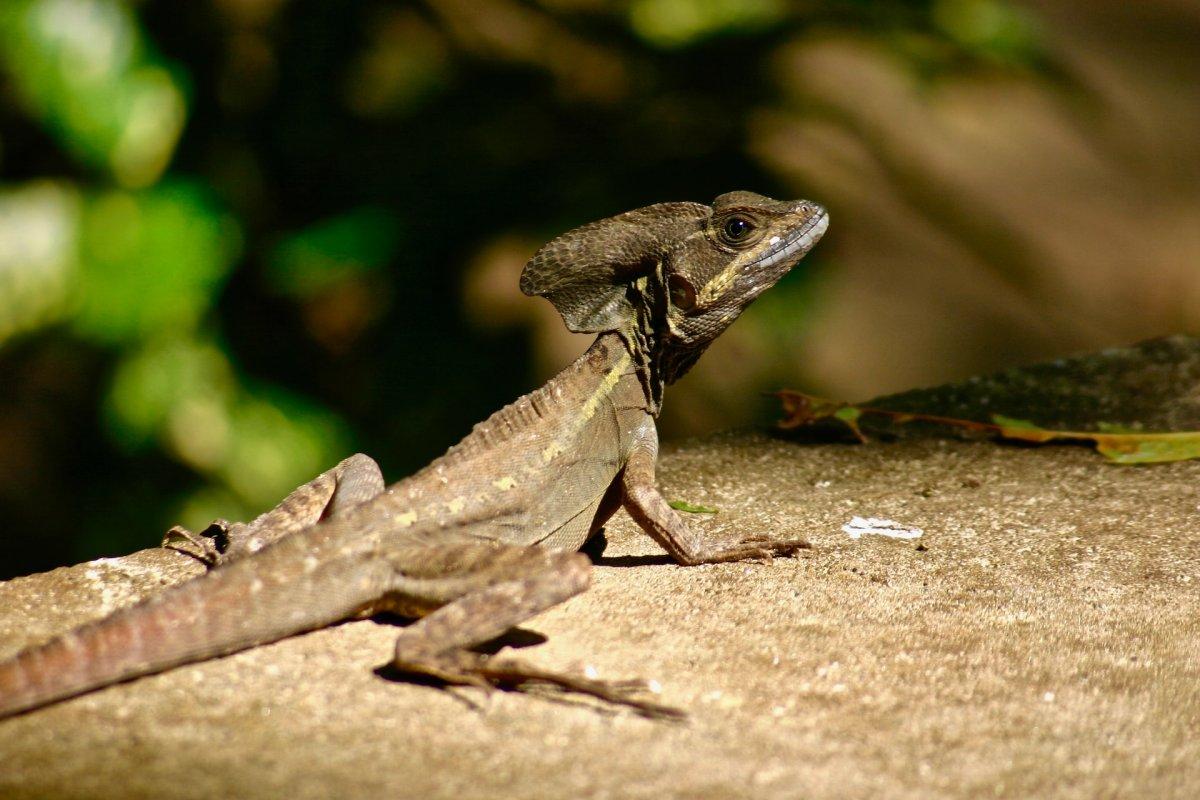
- Name: Brown basilisk
- Scientific name: Basiliscus vittatus
- Conservation status:
The brown basilisk, also known as the striped basilisk or the common basilisk, is a species of basilisk lizard native to Central America, Mexico, and northwestern Colombia. It has also been introduced to Florida as a feral species.
It is famous for running on water! In fact, smaller individuals can run about 10 to 20 m / 33 to 66 ft on the water without sinking. A truly marvelous feat that the young ones can achieve much easier than adults… except if they are threatened.
29. Hawksbill sea turtle
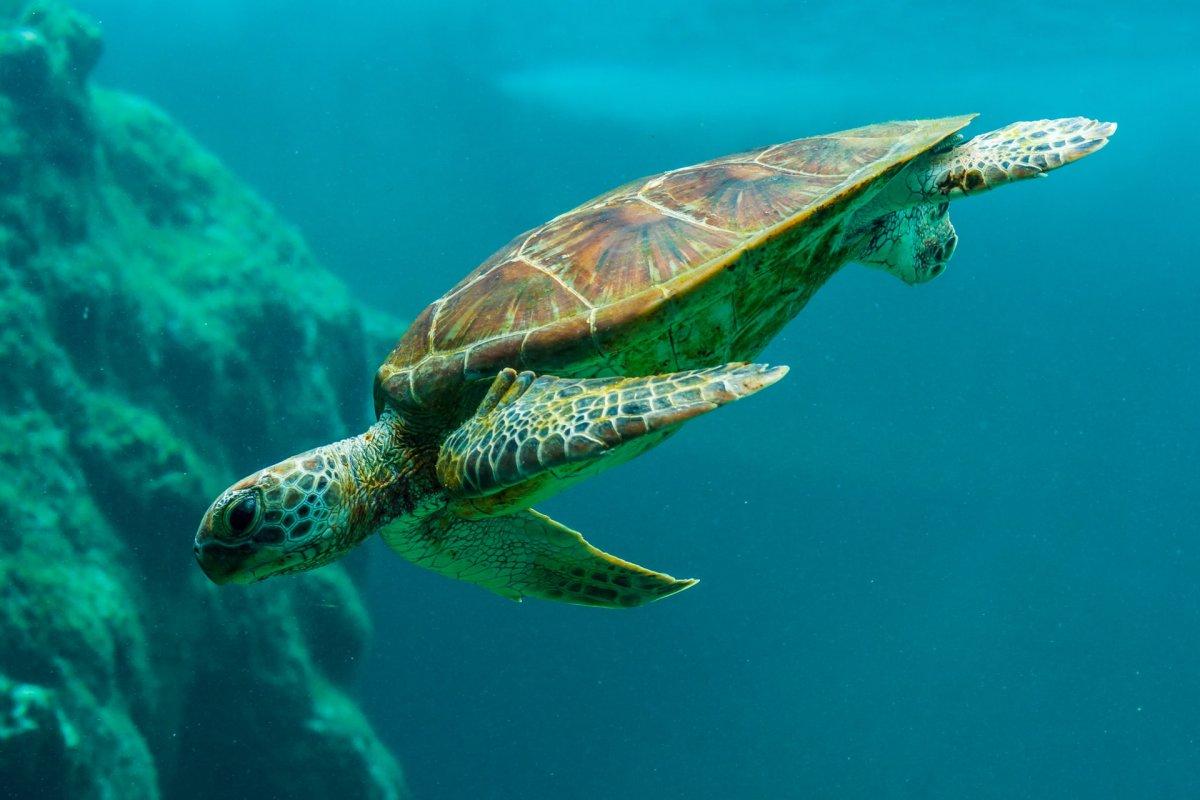
- Name: Hawksbill sea turtle
- Scientific name: Eretmochelys imbricata
- Conservation status:
Believe it or not, 5 out of the world’s 7 living species of sea turtles nest on Costa Rica’s beaches, and the hawksbill turtle, though it is on the brink of extinction, is one of them. However, it can also be found in almost the entire tropical and subtropical part of the planet.
Though this sea turtle likes spending time in the open ocean, it is most often in coral reefs or shallow lagoons. Because of fishing practices, the hawksbill sea turtle might not be long for this world.
30. Common boa
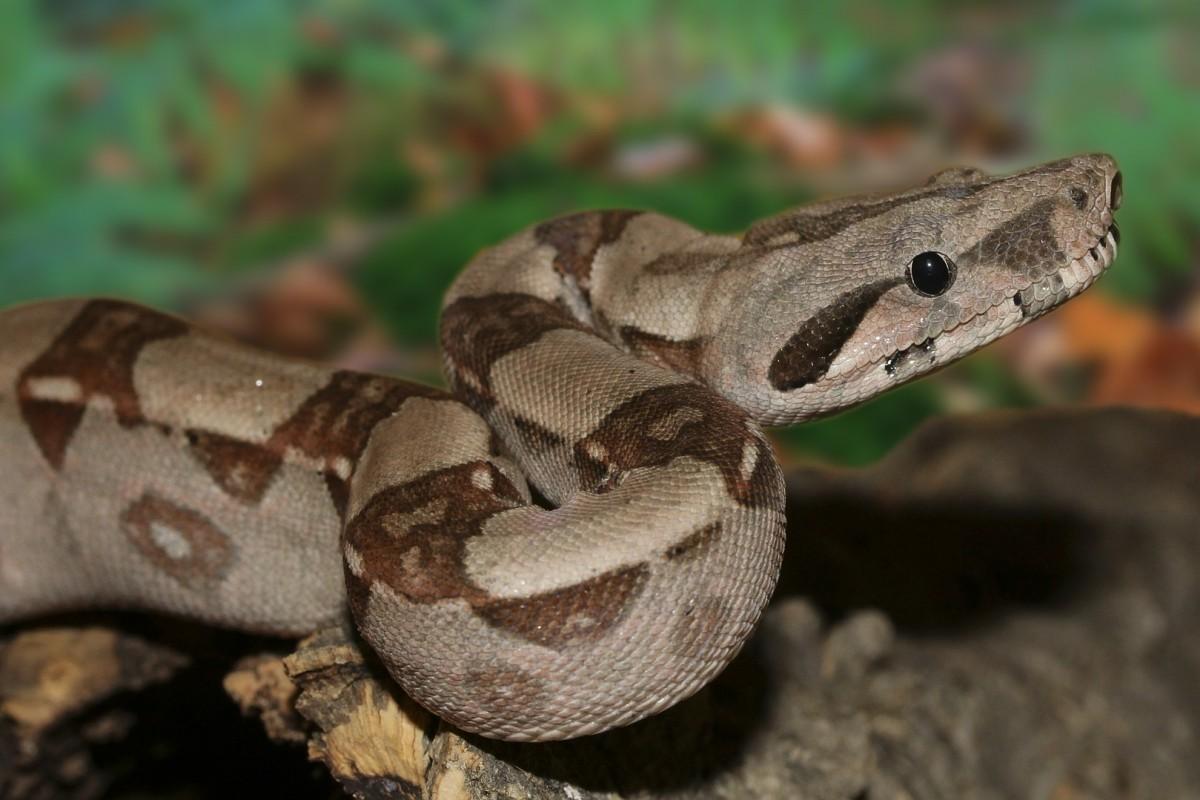
- Name: Common boa
- Scientific name: Boa imperator
- Conservation status:
The common boa, also known as the Colombian boa or the northern boa, is a species of boa commonly kept in captivity. It is a nonvenomous species of snake with a painful bite, though it is not dangerous to humans, usually.
This boa lives on its own and rarely interacts with other snakes outside of mating. It is crepuscular and semi-arboreal. When it becomes older and heavier, it tends to become almost only terrestrial.
31. Central American squirrel monkey
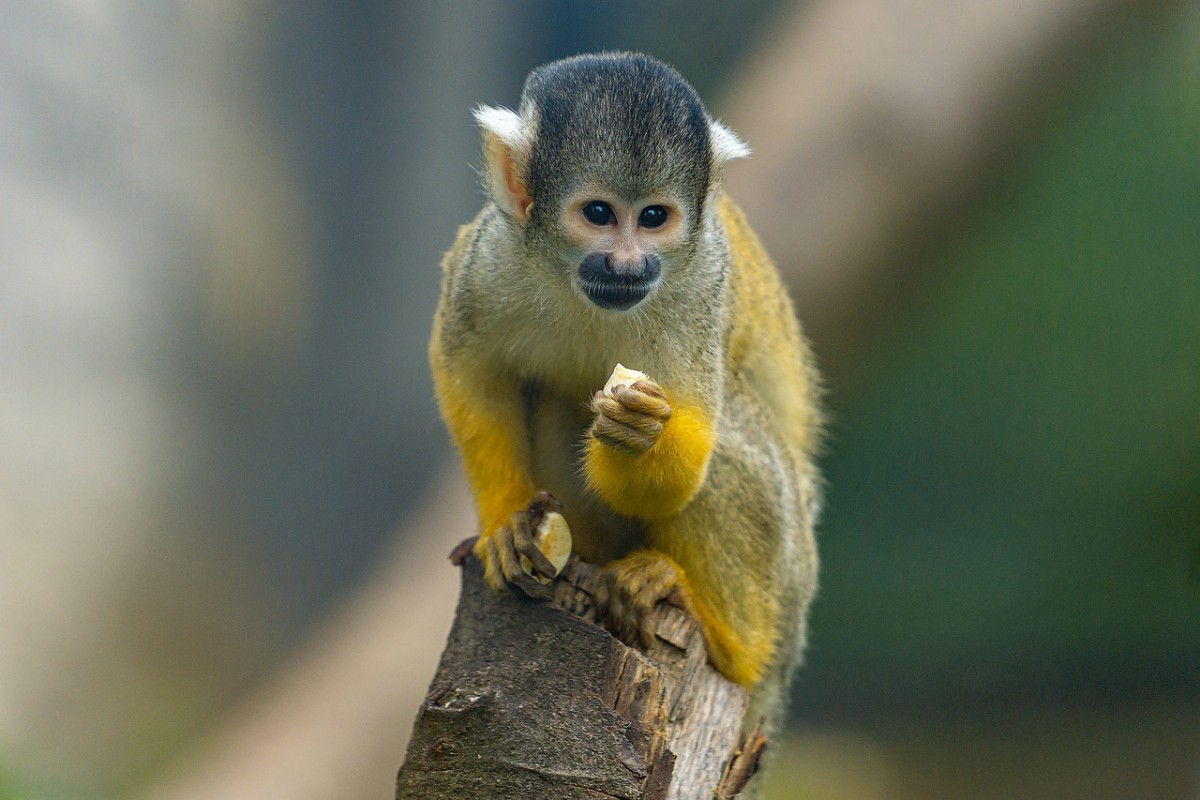
- Name: Central American squirrel monkey
- Scientific name: Saimiri oerstedii
- Conservation status:
The Central American squirrel monkey, also known as the red-backed squirrel monkey, is a species of squirrel monkey native to the Pacific coast of Panama and Costa Rica, which is a small area.
While this monkey used to be considered of least concern, its global population rapidly declined after the 1970s, mostly because of deforestation, capture to be kept as a pet, and hunting: there were around 200,000 individuals before 1970… and there are now 5,000 of them.
32. Panamanian white-faced capuchin
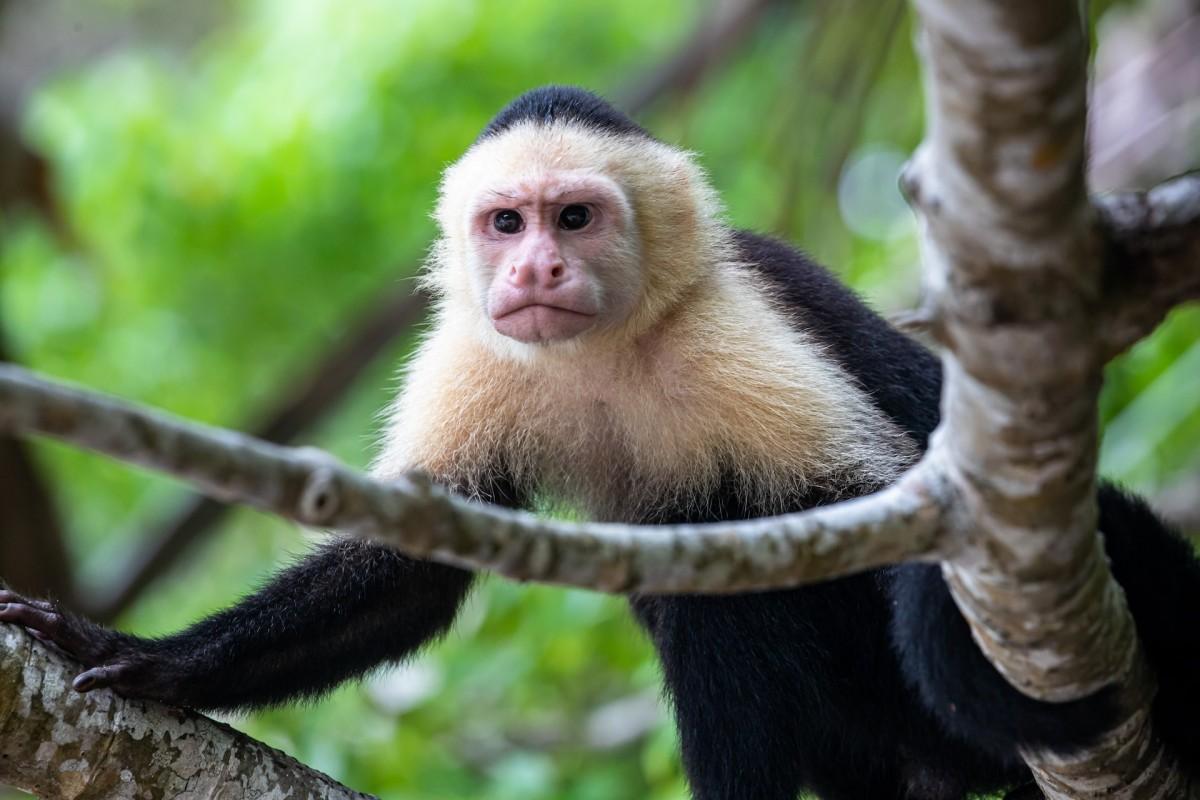
- Name: Panamanian white-faced capuchin
- Scientific name: Cebus imitator
- Conservation status:
The Panamanian white-faced capuchin, also known as the Central American white-faced capuchin, is a species of medium-sized New World monkey native to the forests of Central America. Despite its name, it can also be found in Costa Rica, as well as Colombia.
Interestingly enough, this monkey is among the best known, as it is very intelligent, and often used in TV series and movies (such as “Pirates of the Caribbean” or “Friends”).
33. Bangs’s mountain squirrel
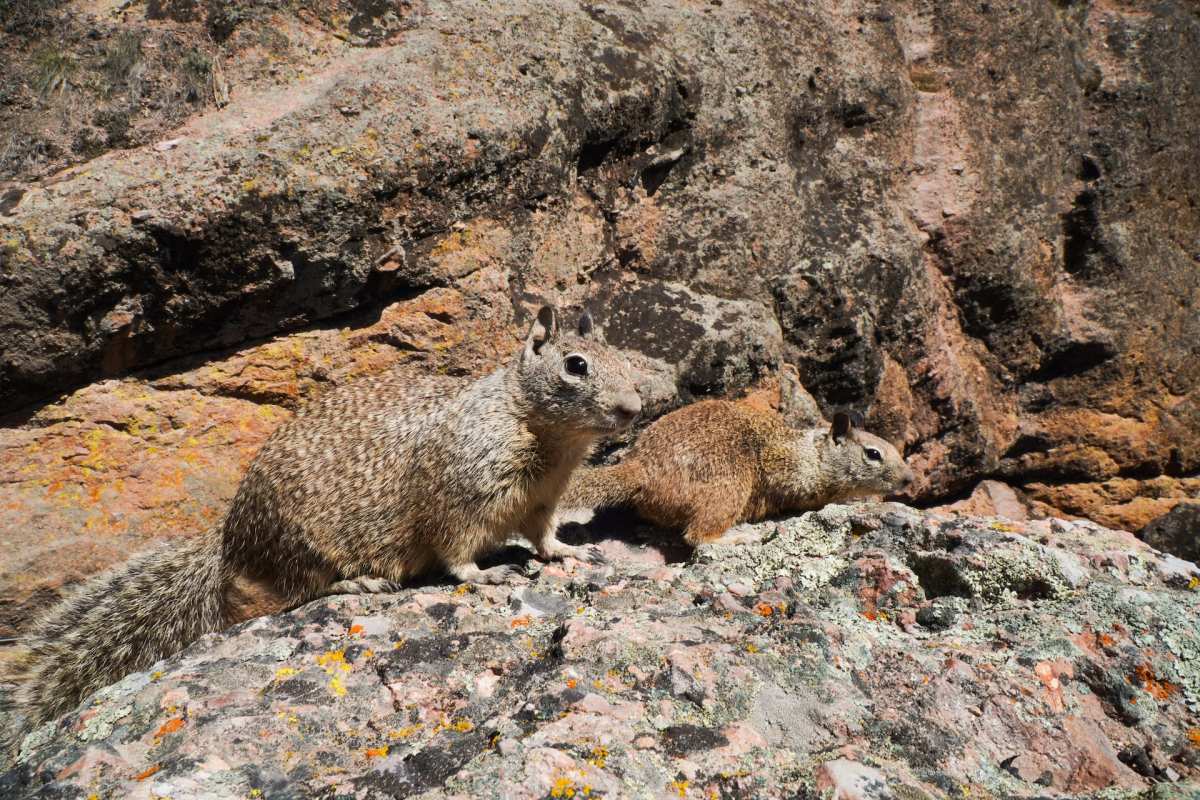
- Name: Bangs’s mountain squirrel
- Scientific name: Syntheosciurus brochus
- Conservation status:
Bangs’s mountain squirrel is a species of tree squirrel that was very recently discovered: until the 1980s, only 4 individuals of this species were known, and a lot remains to be learned about it to this day.
From what we know, it lives in pairs with its young, in a tree nest at a height of 6 to 12 m / 20 to 39 ft. This squirrel lives at an altitude of 1,900 to 2,600 m / 6,200 to 8,500 ft, usually in the treetops.
34. Common minke whale
- Name: Common minke whale
- Scientific name: Balaenoptera acutorostrata
- Conservation status:
The common minke whale, also known as the northern minke whale, is a species of minke whale native to all oceans of the Northern Hemisphere. It is the smallest species of the rorquals, and it started being exploited by many countries at the beginning of the 20th century, for its meat. Despite this, the species is still considered of least concern.
There is also a dwarf subspecies of the common minke whale, which exclusively lives in the southern part of the South Hemisphere.
35. Oncilla
- Name: Oncilla
- Scientific name: Leopardus tigrinus
- Conservation status:
The oncilla, also known as the little spotted cat, the tigrillo, or the northern tiger cat, is a small species of spotted cat native to Central America and central Brazil. It is considered vulnerable due to the consequences of deforestation and agricultural expansion.
This wild cat is terrestrial, but it is also an expert climber. It needs meat in order to survive, and therefore eats small mammals, birds, lizards, invertebrates, tree frogs, and eggs.
36. Northern olingo
- Name: Northern olingo
- Scientific name: Bassaricyon gabbii
- Conservation status:
The northern olingo, also known as the bushy-tailed olingo or simply the olingo (because it is the most common and widespread subspecies of its family), is a species of mammal that dwells in trees. It is related to raccoons, and it has a short, rounded face with large eyes and short ears.
The northern olingo is a nocturnal herbivore, and it almost exclusively feeds on fruit. It can also drink nectar and eat small mammals though.
37. Muscovy duck
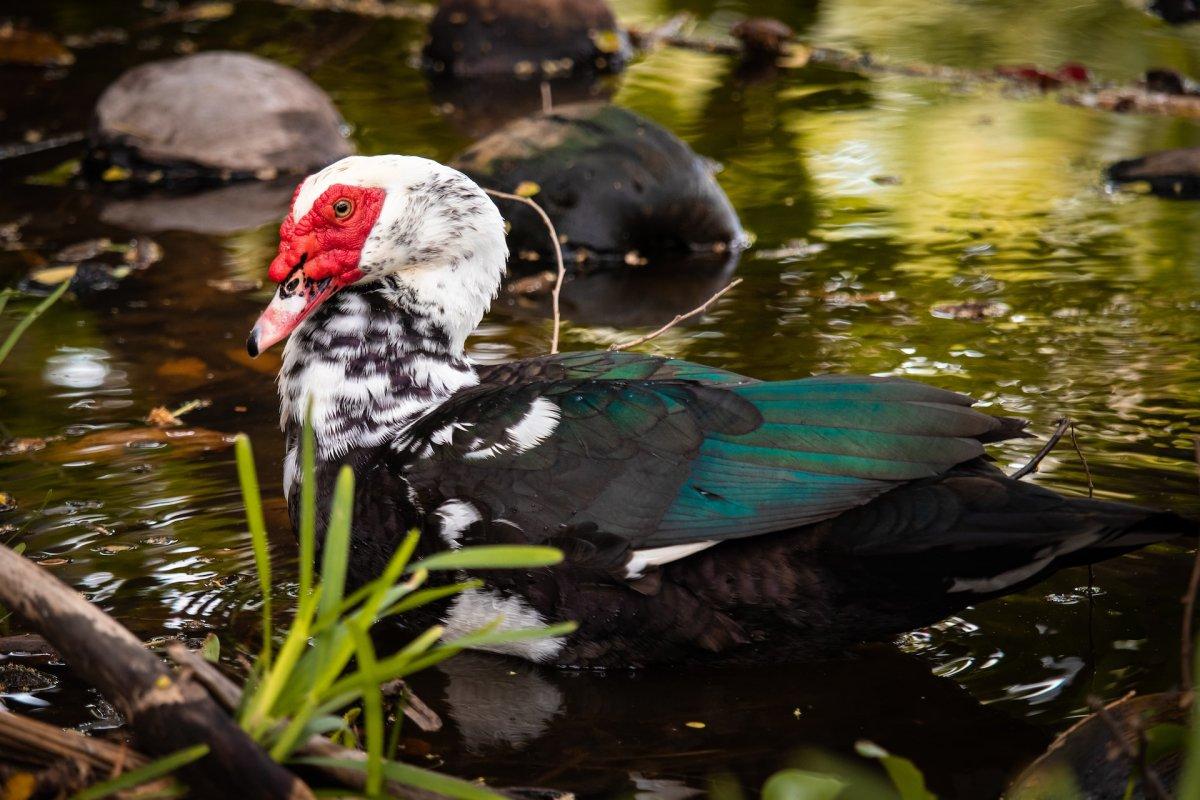
- Name: Muscovy duck
- Scientific name: Cairina moschata
- Conservation status:
The muscovy duck, also known as the Barbary duck in culinary context, is a spectacularly large species of duck native to the Americas. It is sexually dimorphic, as males are about twice as large and heavy as females.
This duck is mostly black and white, while the color of its bill is variable, from pink and red to yellow and even black. Usually, it is a tropical bird; however, it can also thrive in cooler climates, even in weather as cold as -12 °C / 10 °F.
38. Crab-eating raccoon
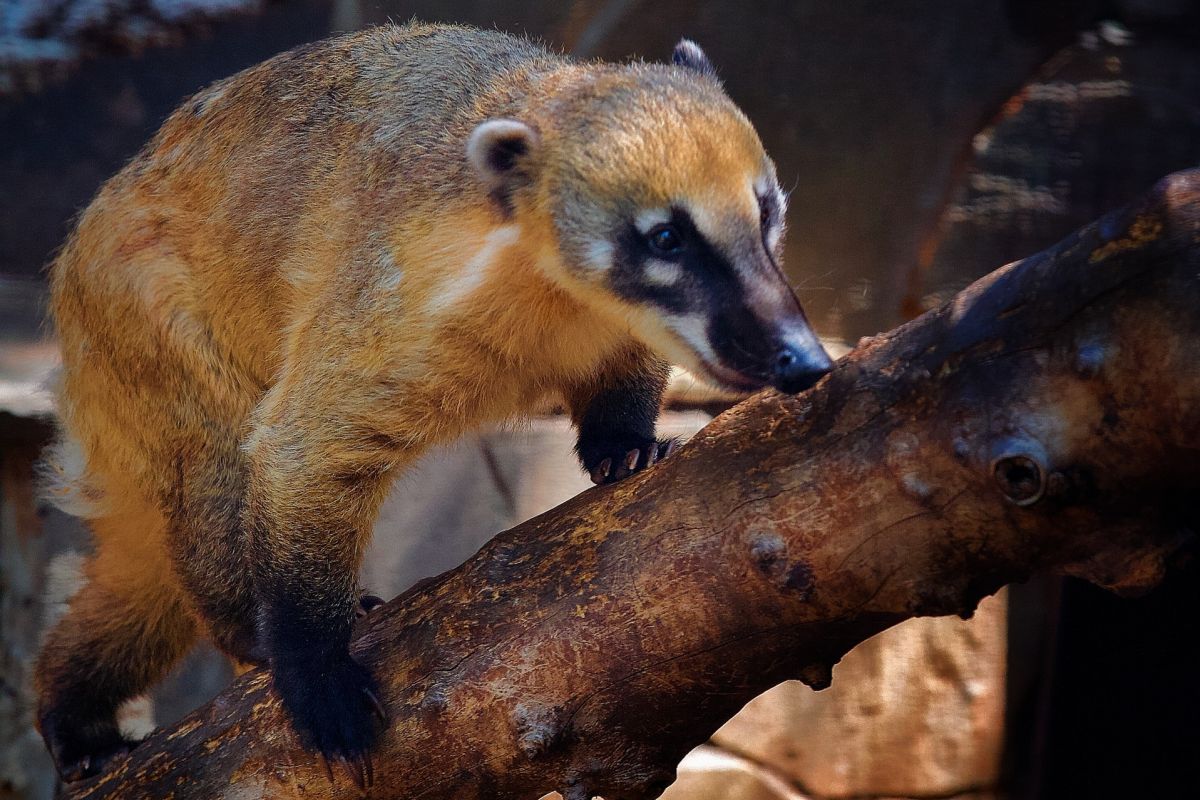
- Name: Crab-eating raccoon
- Scientific name: Procyon cancrivorus
- Conservation status:
The crab-eating raccoon, also known as the South American raccoon, is a species of raccoon native to jungle areas of Central and South America, as well as Trinidad and Tobago. It is found from southern Costa Rica to northern Argentina and is nocturnal and solitary.
Despite its name, it does not only feed on crabs, though it still represents a large part of its diet: it also eats crustaceans, lobster, and shellfish.
39. Striped hog-nosed skunk
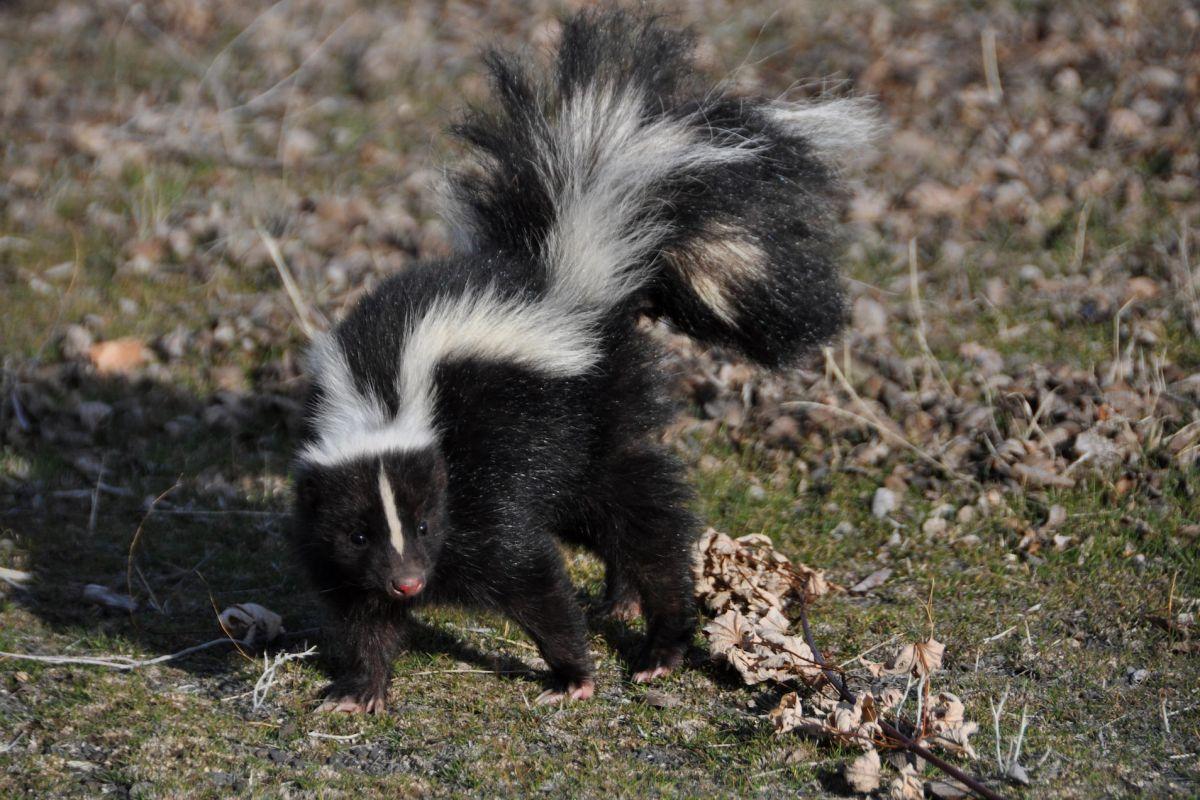
- Name: Striped hog-nosed skunk
- Scientific name: Conepatus semistriatus
- Conservation status:
The striped hog-nosed skunk is a species of skunk native to Central America, northwestern South America, and the extreme east of Brazil. It is a very generalist species that can adapt to almost any environment, even disturbed ones. Most of the time though, it inhabits the foothills or brushy areas.
This skunk is both nocturnal and solitary and feeds mostly on invertebrates, fruits, and small vertebrates.
40. Great curassow
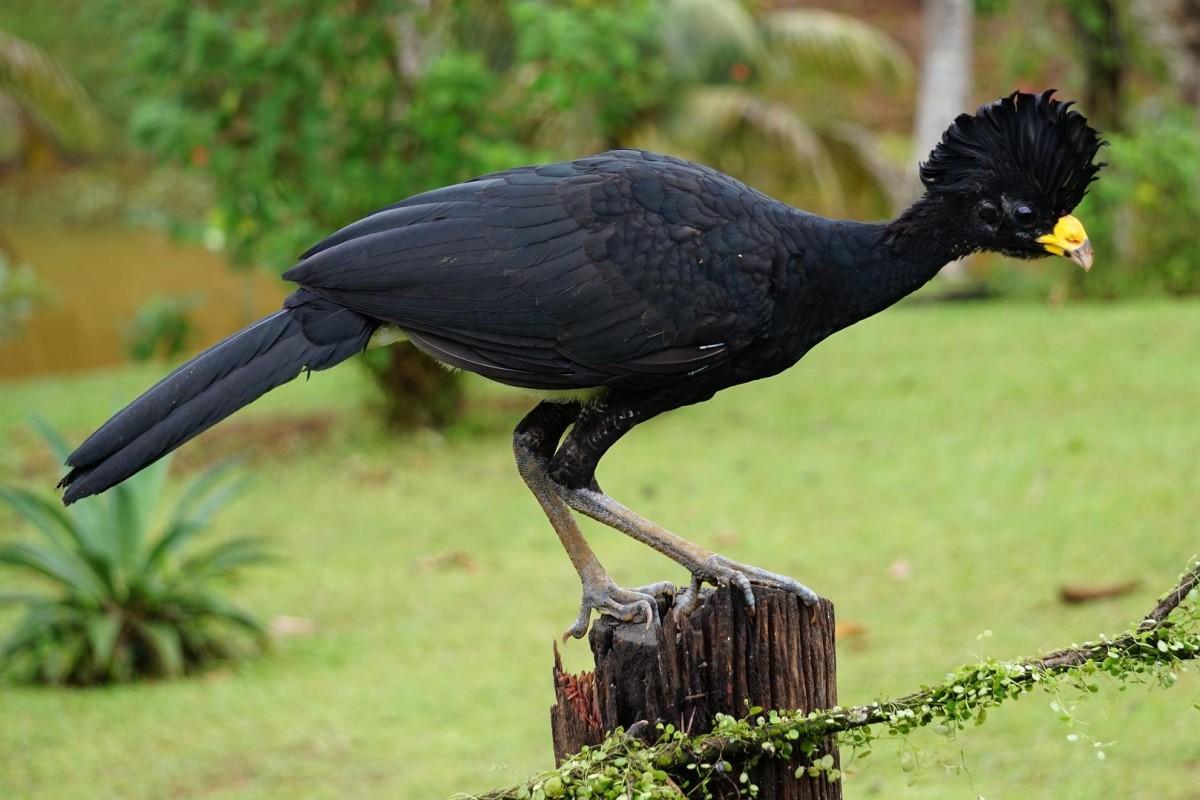
- Name: Great curassow
- Scientific name: Crax rubra
- Conservation status:
The great curassow is a large species of bird native to the Neotropical rainforests. It looks like a pheasant and can be found from eastern Mexico to northwestern Ecuador. Males and females are very different: while females are brown, males are entirely black with a bright yellow bill.
This species is considered vulnerable because of habitat loss and overhunting. Because of this, some individuals are being bred in captivity, to the possibility of their extinction.
41. Black-necked stilt
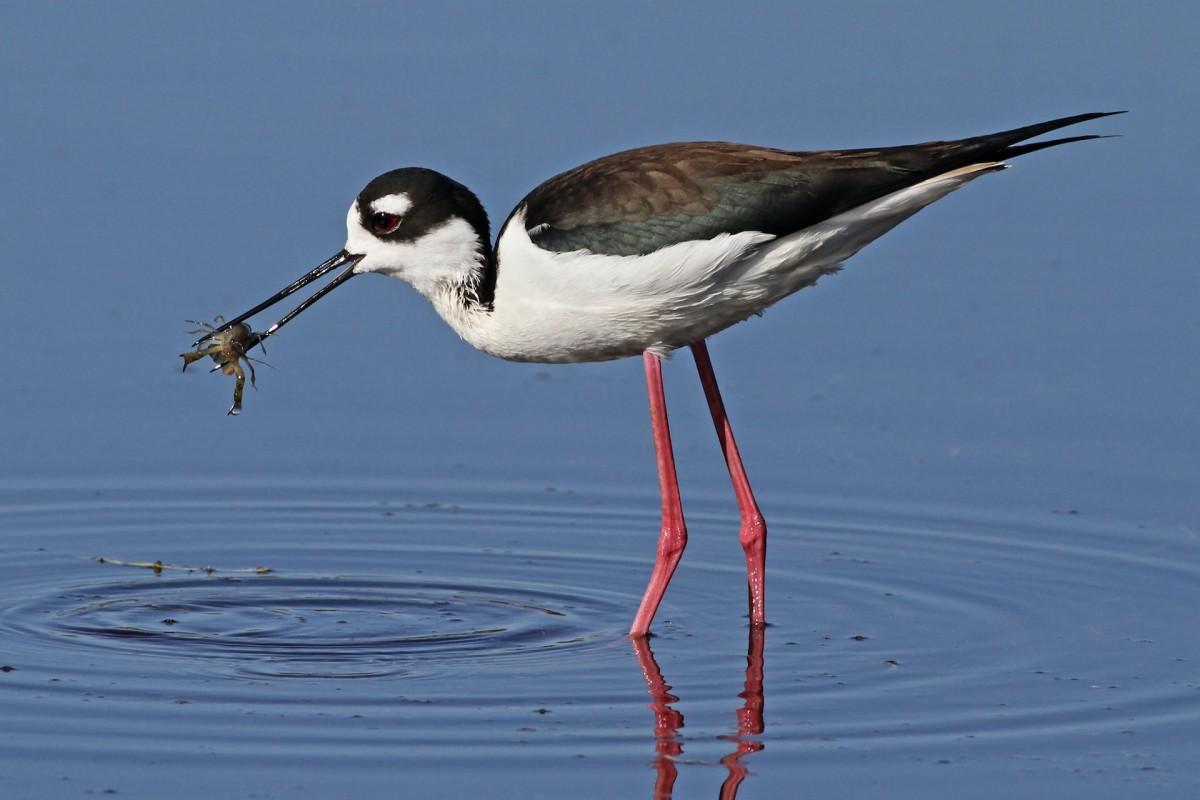
- Name: Black-necked stilt
- Scientific name: Himantopus mexicanus
- Conservation status:
The black-necked stilt is one of the most interesting birds you will see in Costa Rica: it has very long legs, perfect for its environment. This bird can be found from the western United States to Costa Rica, usually in wetland habitats.
This bird feeds by foraging the sand, in hopes to find crustaceans, mollusks, tadpoles, and small fish. Sometimes, it will also feed on plant seeds, if nothing else is available.
42. Galápagos sea lion
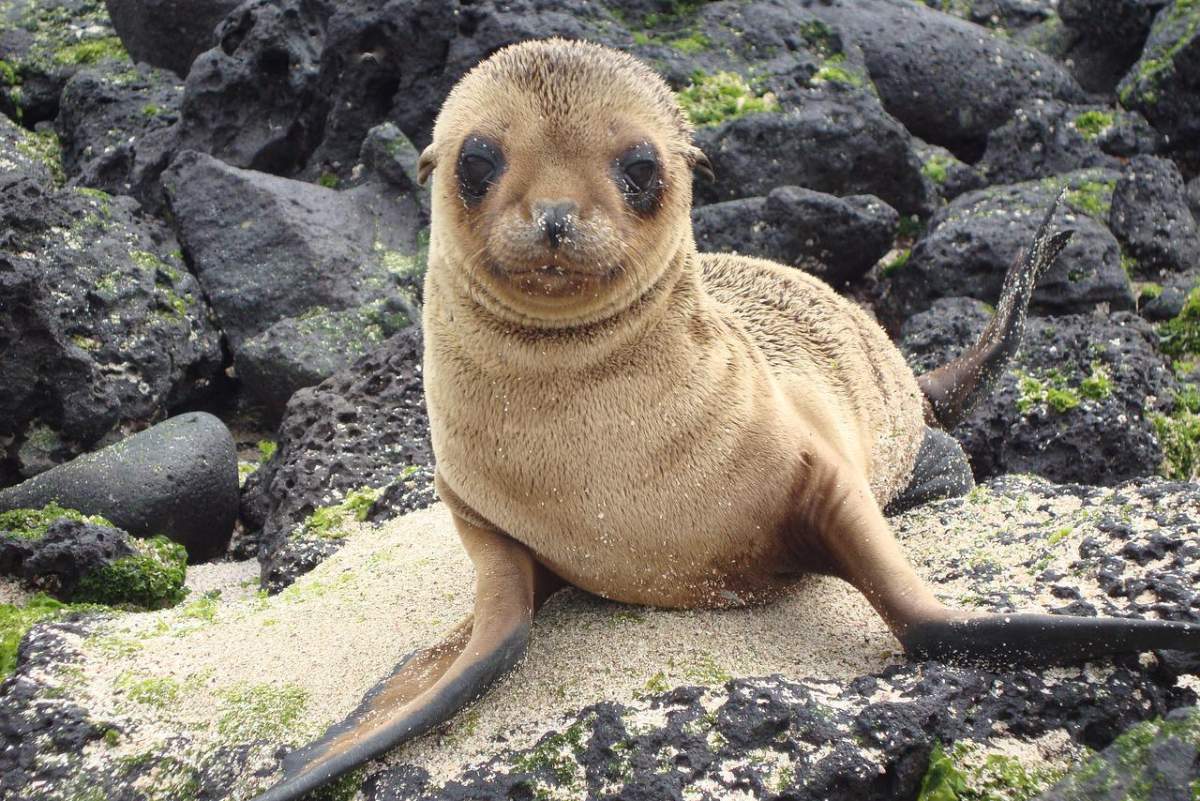
- Name: Galápagos sea lion
- Scientific name: Zalophus wollebaeki
- Conservation status:
The Galápagos Islands are an archipelago of volcanic islands and are part of the Republic of Ecuador. Despite this, some animals like the Galápagos sea lion can sometimes be seen in Costa Rica.
This animal is the smallest of all sea lions and is very vulnerable to human activity. Because it is social and curious by nature, it will quite often approach areas inhabited by humans, and interact with human waste, hooks, and fishing nets, which are all obviously very dangerous to them.
43. Greater grison
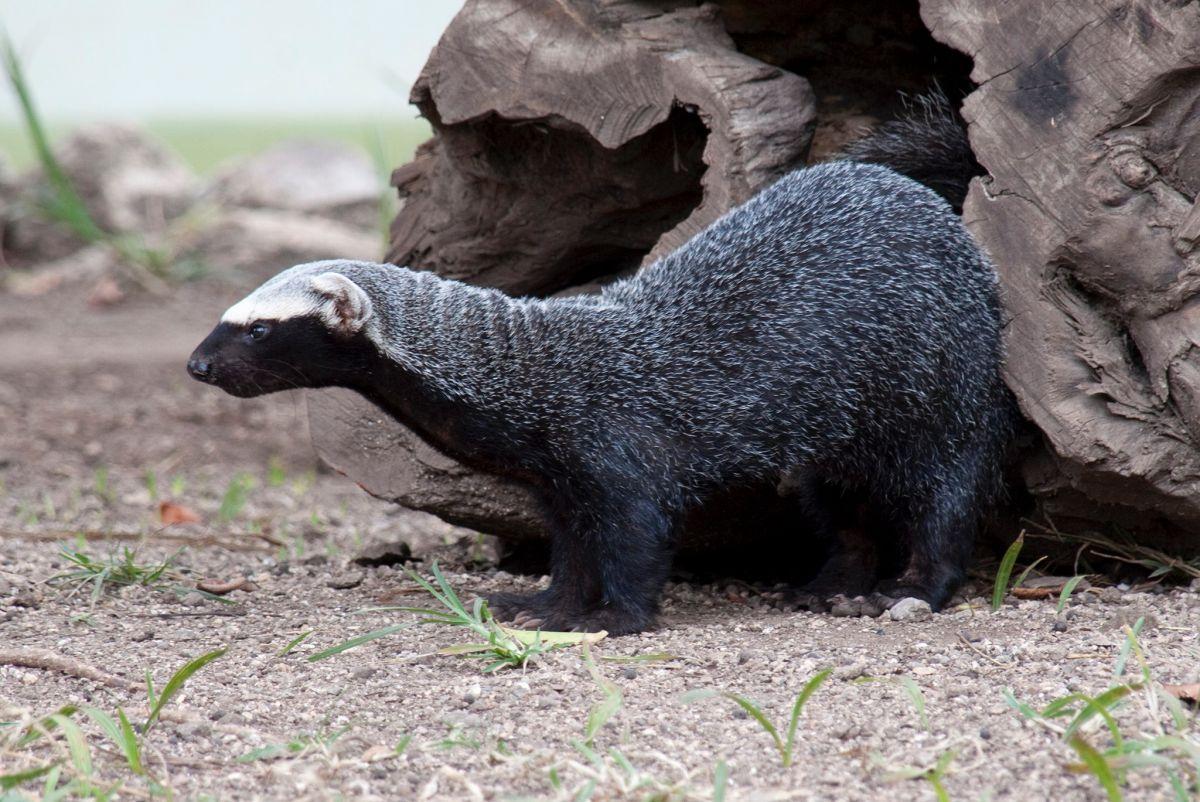
Tony Hisgett / CC BY
- Name: Greater grison
- Scientific name: Galictis vittata
- Conservation status:
The greater grison is a species of mustelid native to Central America and northern South America. It has a slender build with short legs, as well as a short, bushy tail. It can be found in a wide range of forests, as well as cerrado habitats and plantations.
This grison is terrestrial, but it can also climb trees and swim pretty well. It is active by day and spends the night sleeping in cavities in hollow trees or beneath tree roots.
44. Gray fox
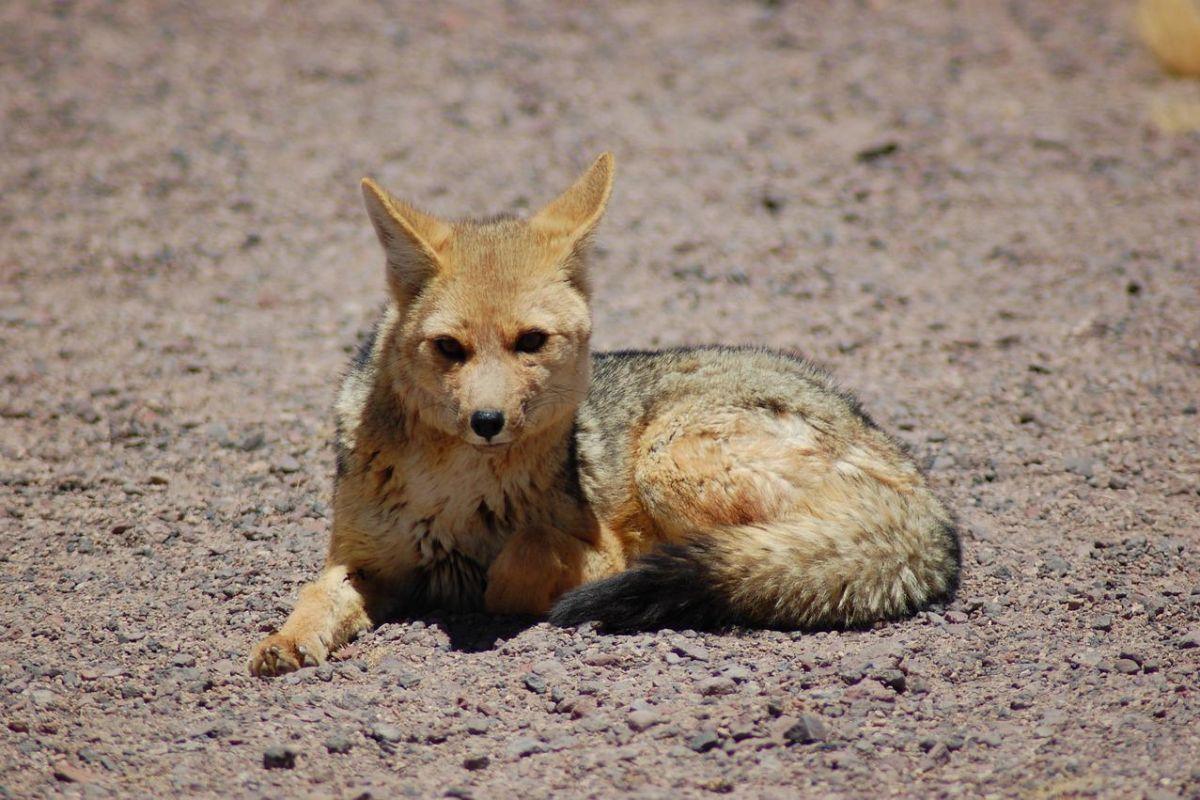
- Name: Gray fox
- Scientific name: Urocyon cinereoargenteus
- Conservation status:
The gray fox is a species of omnivorous mammal native to North and Central America. While it used to be the most widespread species of fox on the continent, it suffered from deforestation and human advancement, which allowed the red fox to thrive instead.
The gray fox is an excellent climber with strong claws. It uses them to escape lots of predators, such as the coyote or the domestic dog, as well as to reach arboreal food sources.
45. White-tailed deer
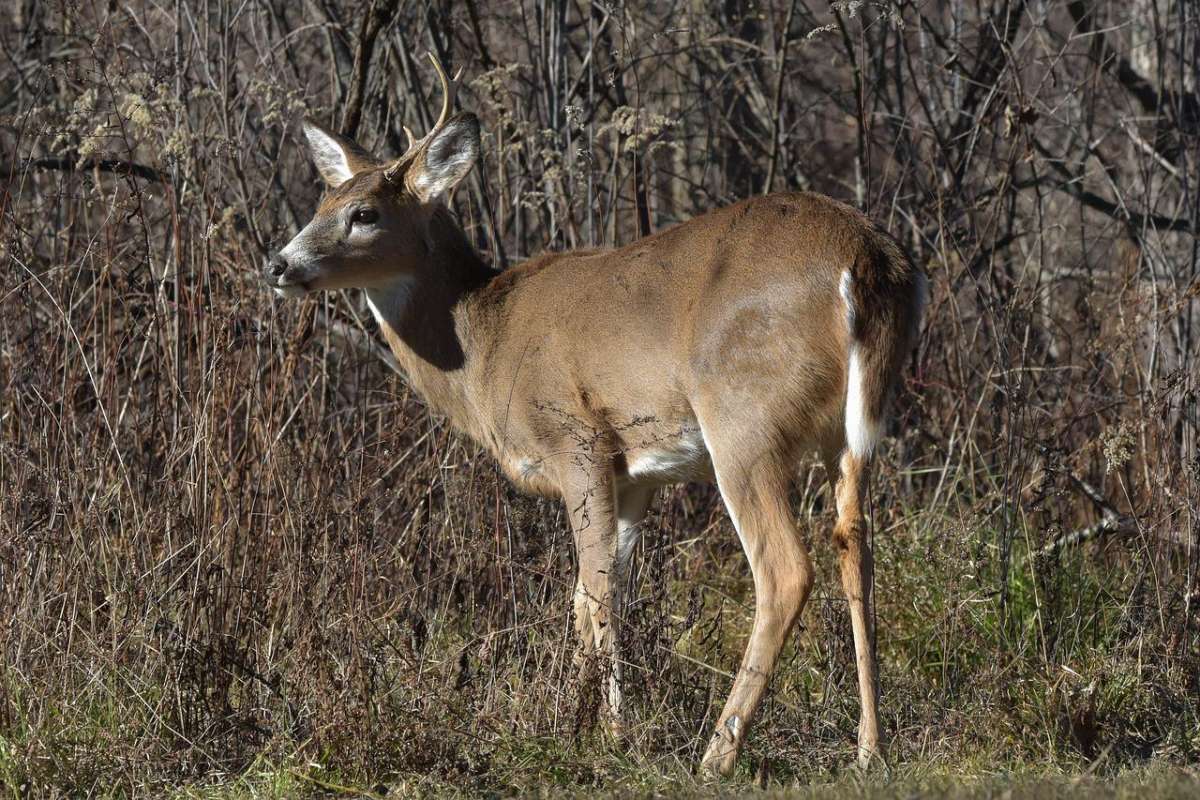
- Name: White-tailed deer
- Scientific name: Odocoileus virginianus
- Conservation status:
The white-tailed deer, also known as the Virginia deer or simply the whitetail, is a medium-sized species of deer native to most of the Americas, except for the extreme northern and the southern parts.
Before the sloth, this deer was the national symbol of Costa Rica. It is very widely spread and is also generalist, which is why it can be found in so many different countries and habitats.
46. Dice’s cottontail
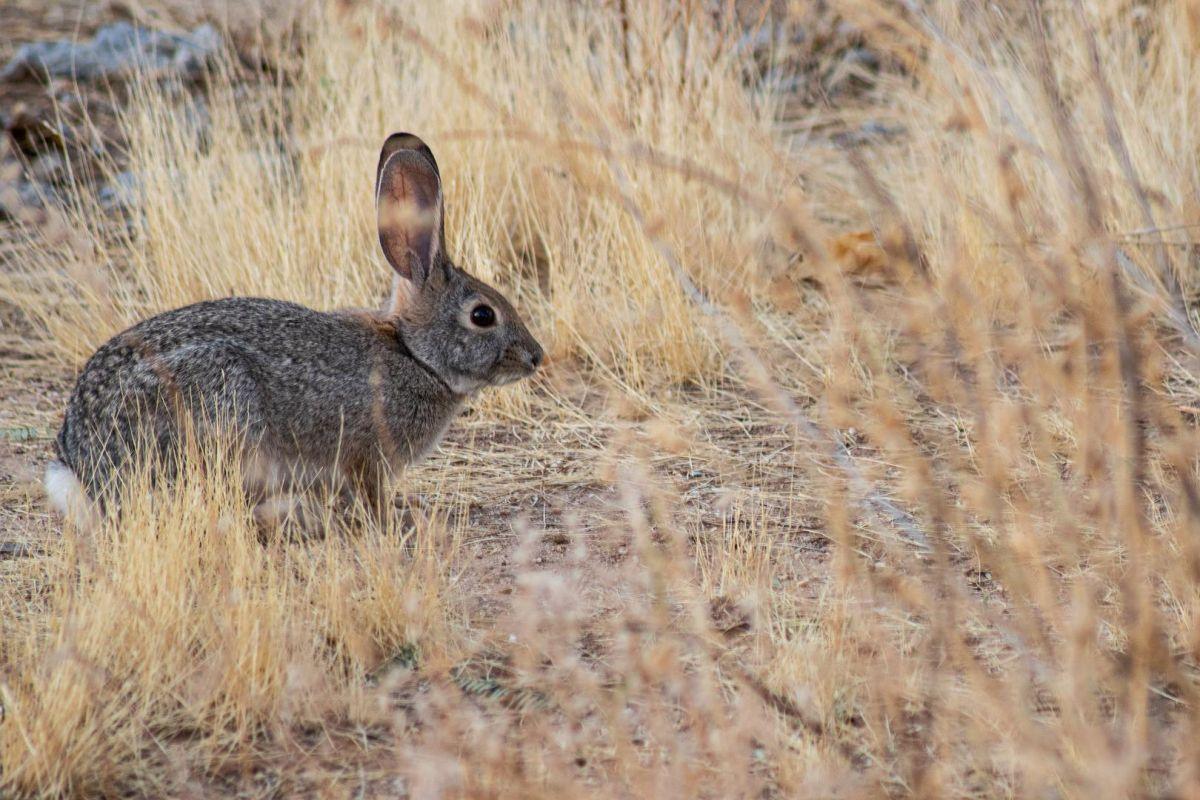
- Name: Dice’s cottontail
- Scientific name: Sylvilagus dicei
- Conservation status:
Dice’s cottontail is a species of rabbit endemic to a small area of Panama and Costa Rica. Usually, it inhabits cloud forests and lives at an altitude of up to 3,800 m / 12,500 ft. It also likes grasslands and alpine meadows.
This rabbit has to face many threats: natural predators such as coyotes or skunks, forest degradation, and fire, as local inhabitants are known to burn the land for range control.
47. Greater bulldog bat
- Name: Greater bulldog bat
- Scientific name: Noctilio leporinus
- Conservation status:
The greater bulldog bat, also known as the fisherman bat, is a species of fishing bat native to Latin America. With its sharp claws, it scoops its prey up, catches it, and clings to it. Like other bats, it often uses echolocation for navigation, and the sound it emits is unusually high-pitched for such a large species.
This large bat lives in tropical lowlands, usually over ponds and streams, but also in coastal lagoons and estuaries.
48. Armored rat
- Name: Armored rat
- Scientific name: Hoplomys gymnurus
- Conservation status:
Some people are scared of common city rats. Could you imagine their reaction to an armored rat?
This animal is nocturnal, and lives in burrows, near bodies of water. When they are born, armored rats have soft fur, and they start developing their spines after their first month. These spines are thick and can measure up to 33 mm / 1.3 in. They mostly feed on fruit, green plant matter, and insects.
49. Geoffroy’s spider monkey
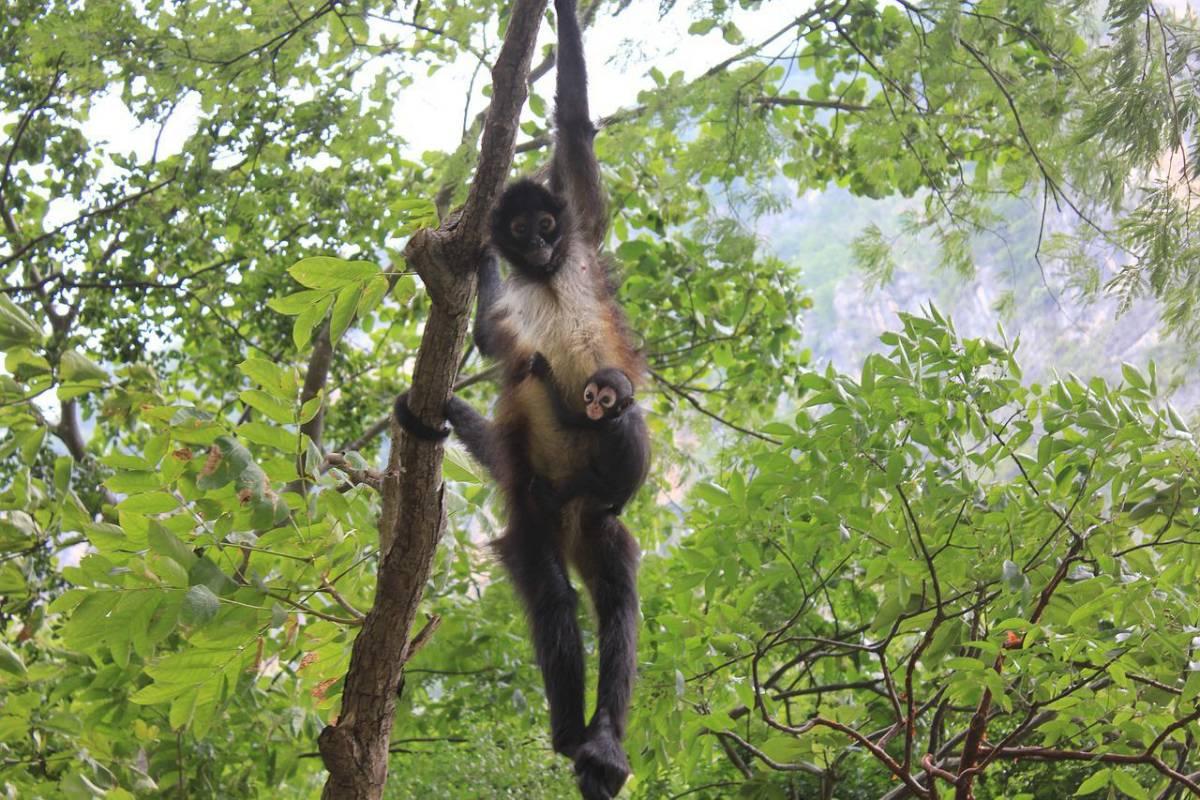
- Name: Geoffroy’s spider monkey
- Scientific name: Ateles geoffroyi
- Conservation status:
Geoffroy’s spider monkey, also known as the Central American spider monkey or the black-handed spider monkey, is a species of primate native to Central America, Mexico, and Colombia. It has very long arms, significantly longer than its legs, and it has strong, long fingers as well.
This monkey lives in societies of 20 to 42 individuals, and mostly feeds on ripe fruit. In order to survive, it needs large tracts of forest, which is why deforestation is its biggest threat.
50. Leatherback sea turtle
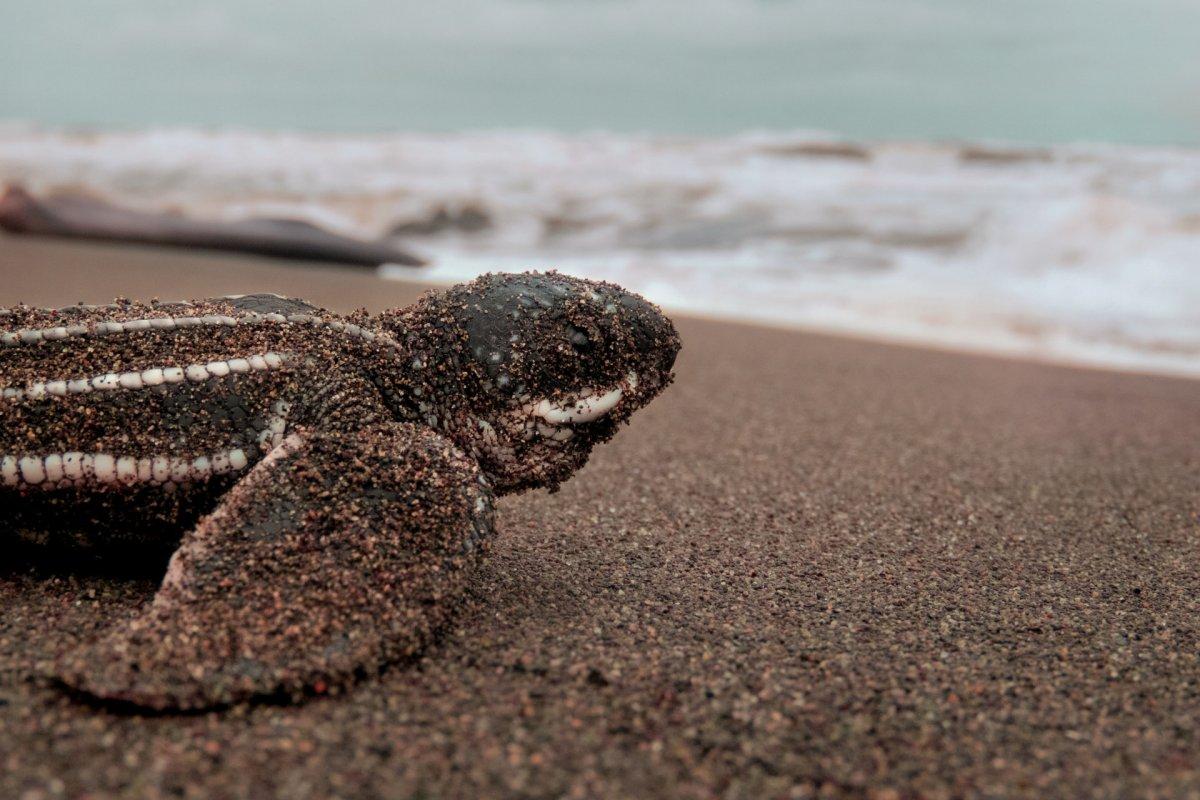
- Name: Leatherback sea turtle
- Scientific name: Dermochelys coriacea
- Conservation status:
The leatherback sea turtle, also known as the leathery turtle or the lute turtle, is the best way to end this list. It is absolutely massive, reaching lengths of up to 2 m / 6.5 ft, and weighing as much as 600 kg / 1,322 lb, making it the heaviest non-crocodile reptile, and the largest of all turtles.
Unlike most other sea turtles, it does not have a bony shell, but a leather-like skin on top of its carapace.
—
So there you have them, these were my 50 animals that are part of the wildlife of Costa Rica. I hope you enjoyed this list and that you learned something new today.
In case you want to learn more about the Costa Rican wildlife, feel free to keep reading, as I still have lots of things to tell you about:
Endangered Animals of Costa Rica
This is definitely the saddest part of the list, but it is very important to raise awareness. Because of this, let’s go through the list of endangered animals in Costa Rica.
Here are the Costa Rica wild animals in danger of extinction.
- Golden toad
- Pass stubfoot toad
- Chiriqui harlequin frog
- Caribbean monk seal
- Continental divide treefrog
- Galapagos petrel
- Smalltooth sawfish
- Oceanic whitetip shark
- Rio Claro robber frog
- and 34 more…
- Horned marsupial frog
- Cerro pando salamander
- Spinetail devil ray
- Bonnethead shark
- Black-crowned Central American squirrel monkey
- and 78 more…
To see the full list of endangered species in Costa Rica, head over to the International Union for Conservation of Nature’s Red List.
What is the National Animal of Costa Rica?
The national animal of Costa Rica is the sloth.
Quite recently, lawmakers voted for a change about the national animal of Costa Rica: while it used to be the white-tailed deer, since 2019, it is now the two- and three-toed sloth.
These animals have slowly become more and more important, and are a national pride: they are native to the country and are in need of protection. With this change, the government hopes to protect these iconic mammals more efficiently and raise awareness.
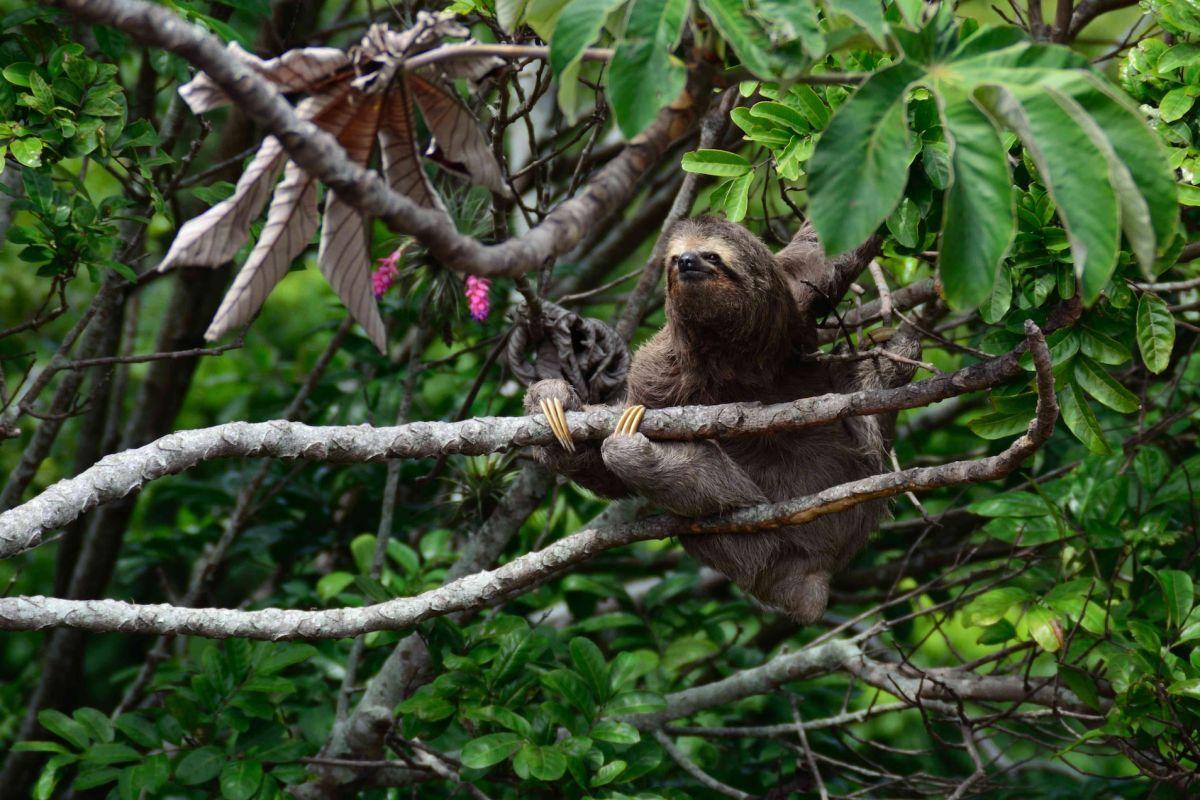
How Many Animals Native to Costa Rica?
What is the diversity of native animals in Costa Rica?
Let’s look at the total number of species of Chordata (mammals, birds, fishes, and reptiles).
Total number of animal species in Costa Rica: 3,694 (8,066 in total in Mesoamerica)
More About Animals in the World!
Loved these Costa Rica animal facts? Want to see what animals live in other countries?
Then check out these posts:
- Wild Animals in Panama
- Wild Animals in Guatemala
- Wild Animals in Nicaragua
Or click here to see ALL the facts up on the blog! Spoiler alert: there’s A LOT of them.
Share the knowledge! Click on the buttons below to share information about these famous animals in Costa Rica with your friends, and help them learn more about the world 🙂






